Country music, a genre deeply woven into the fabric of American culture, tells stories that resonate with raw emotion, heartfelt narratives, and the unmistakable twang that speaks to the soul. From tales of love and loss to anthems of rebellion and resilience, country songs capture the essence of life’s journey. This curated list explores the Top Country Songs that have not only defined generations but continue to shape the landscape of music today. We delve into the melodies and lyrics that have made these tracks timeless classics, reflecting the evolving story of country music itself. From the early pioneers who laid the foundation to the modern innovators pushing boundaries, these are the songs that every country music enthusiast should know and appreciate.
Tom T. Hall, ‘(Old Dogs-Children and) Watermelon Wine’
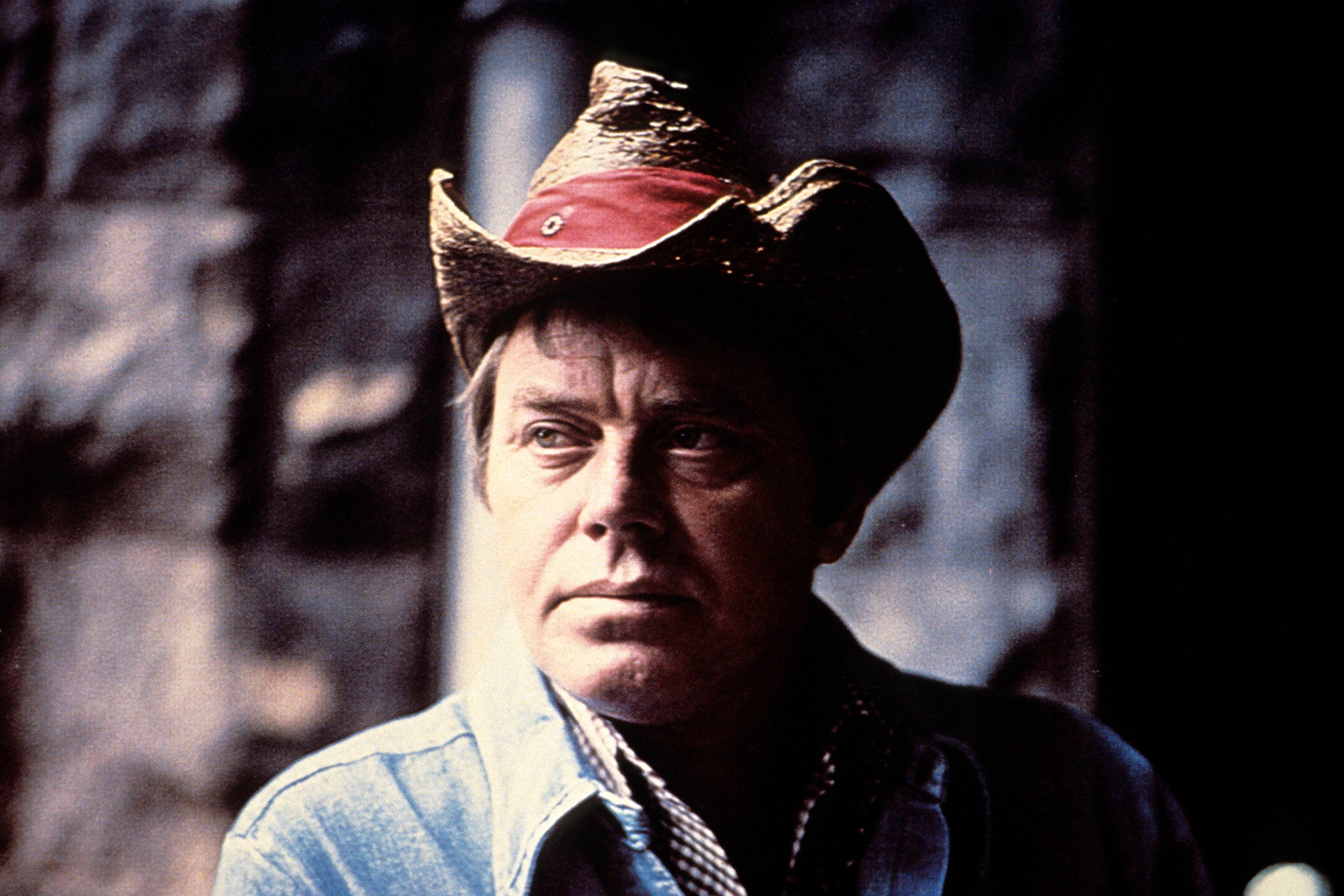 Tom T Hall performing on stage
Tom T Hall performing on stage
Image Credit: GAB Archive/Redferns/Getty Images
In 1972, Tom T. Hall, a master storyteller of country music, journeyed to the Democratic National Convention in Miami Beach. This trip, intended for a performance at the nomination of George McGovern, unexpectedly led to the creation of a soon-to-be hit. Upon his return to Nashville, Hall recounted a conversation with a janitor nearing his 66th birthday. The janitor shared his simple yet profound life philosophy, emphasizing the importance of “old dogs, children, and watermelon wine” while expressing skepticism about the dependability of lovers and friends. Hall, deeply moved by this perspective, transformed it into a song. “(Old Dogs-Children and) Watermelon Wine” appears sentimental at first listen, but it subtly reveals a cynical undercurrent, reflecting the disillusionment prevalent in the Seventies. This hit song, born from a casual conversation, encapsulates a uniquely American sentiment.
Elvis Presley, ‘Blue Moon of Kentucky’
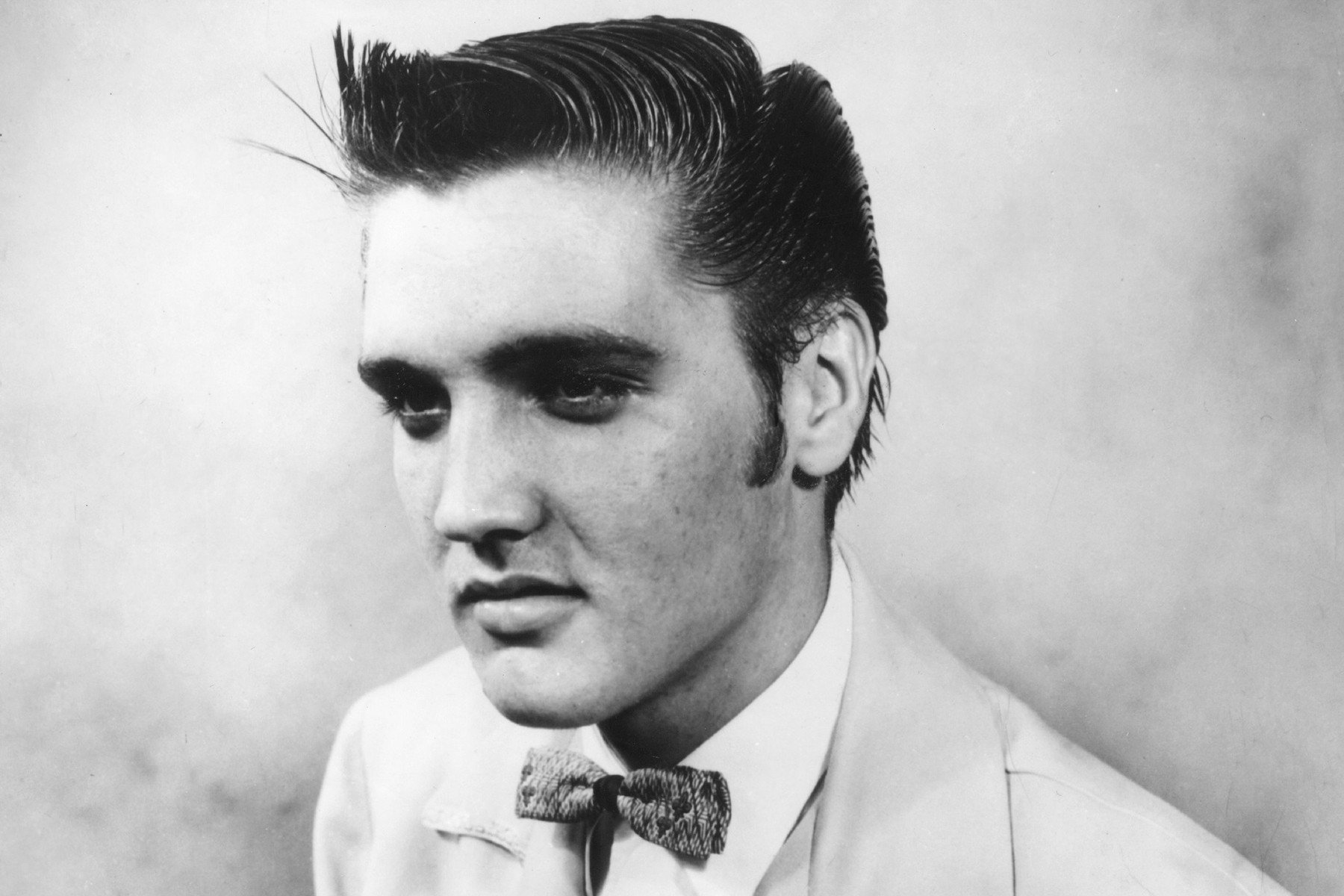 Elvis Presley in 1954 wearing a bow tie
Elvis Presley in 1954 wearing a bow tie
Image Credit: Memphis Brooks Museum/Michael Ochs Archives/Getty Images
Originally composed by bluegrass legend Bill Monroe, “Blue Moon of Kentucky” took a transformative leap in 1954 when a 19-year-old Elvis Presley reimagined it. Presley converted the slow-burning country ballad into an electrifying rock & roll anthem, igniting a revolution in American music. Unlike Monroe’s formal and plaintive style, Presley’s rendition was strikingly informal, akin to a casual performance at a neighborhood gathering. He boldly began the song with rockabilly improvisations before transitioning into Monroe’s original lyrics, symbolizing the dawn of a new musical era. Sam Phillips, the visionary behind Sun Records, later shared with Rolling Stone the initial apprehension surrounding this bold musical fusion, fearing community backlash for “messing with bluegrass,” a genre considered sacred by many. Presley’s version, however, broke barriers and became a pivotal track in the history of top country songs and rock and roll.
Randy Travis, ‘Forever and Ever, Amen’
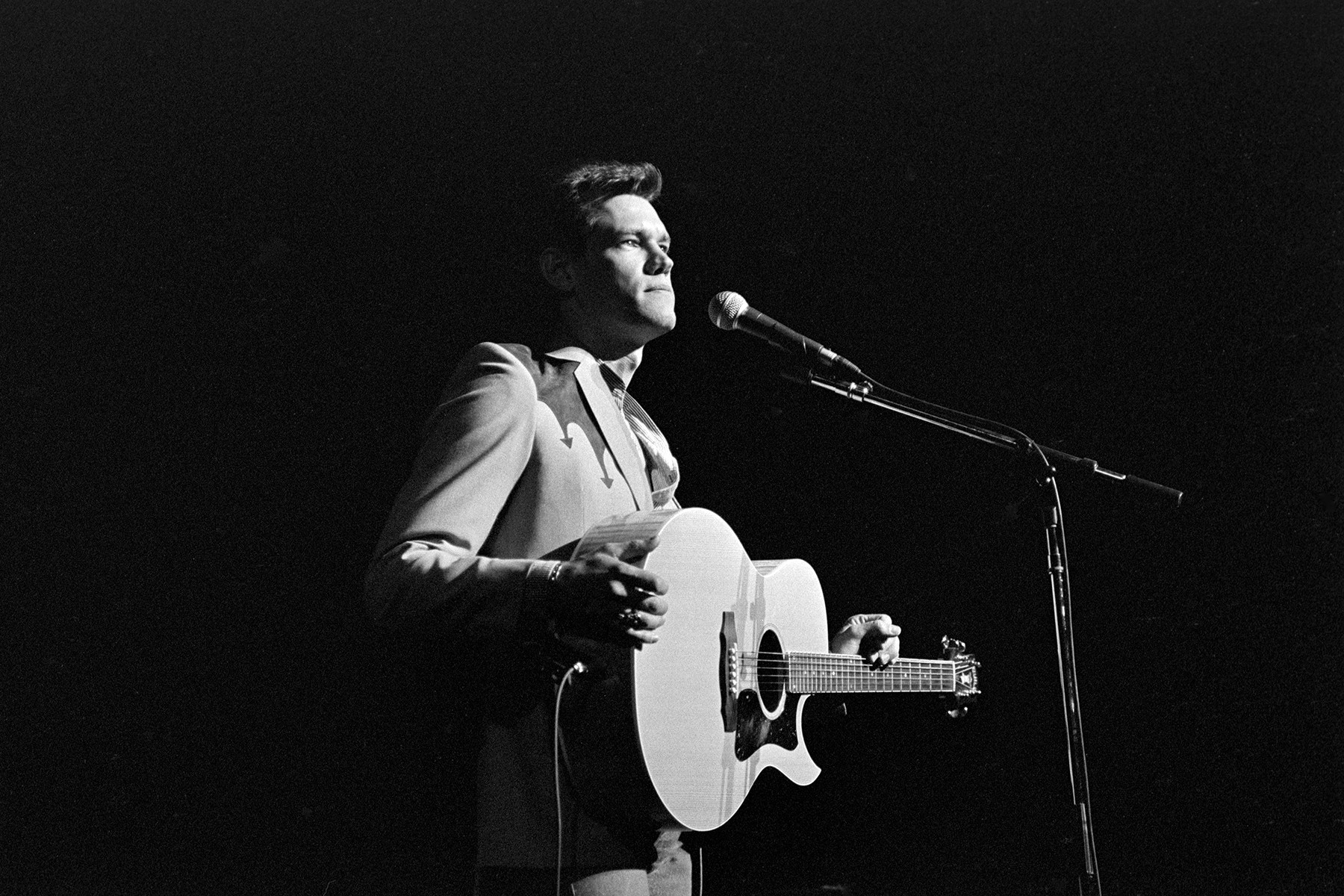 Randy Travis performing at Cheyenne Frontier Days rodeo in 1987
Randy Travis performing at Cheyenne Frontier Days rodeo in 1987
Image Credit: Mark Junge/Getty Images
“Forever and Ever, Amen” not only cemented Randy Travis’s career but also became an emblem of Eighties neo-traditionalist country music. This chart-topping hit, which also lent its name to Travis’s 2019 memoir, encapsulates the essence of heartfelt commitment. Sung over a beautifully crafted melody, Travis portrays a man who seems to have found faith and left behind his youthful wanderings. He pledges unwavering devotion, promising eternal love. Penned by seasoned songwriters Paul Overstreet and Don Schlitz, “Forever” masterfully balances deep sentimentality with an upbeat rhythm and Travis’s genuinely relatable delivery, preventing it from becoming overly saccharine. The song’s widespread acclaim was highlighted by a Grammy for Best Country Song and Song of the Year accolades from both the Academy of Country Music and the Country Music Association in 1988, solidifying its place among top country songs.
Freddy Fender, ‘Before the Next Teardrop Falls’
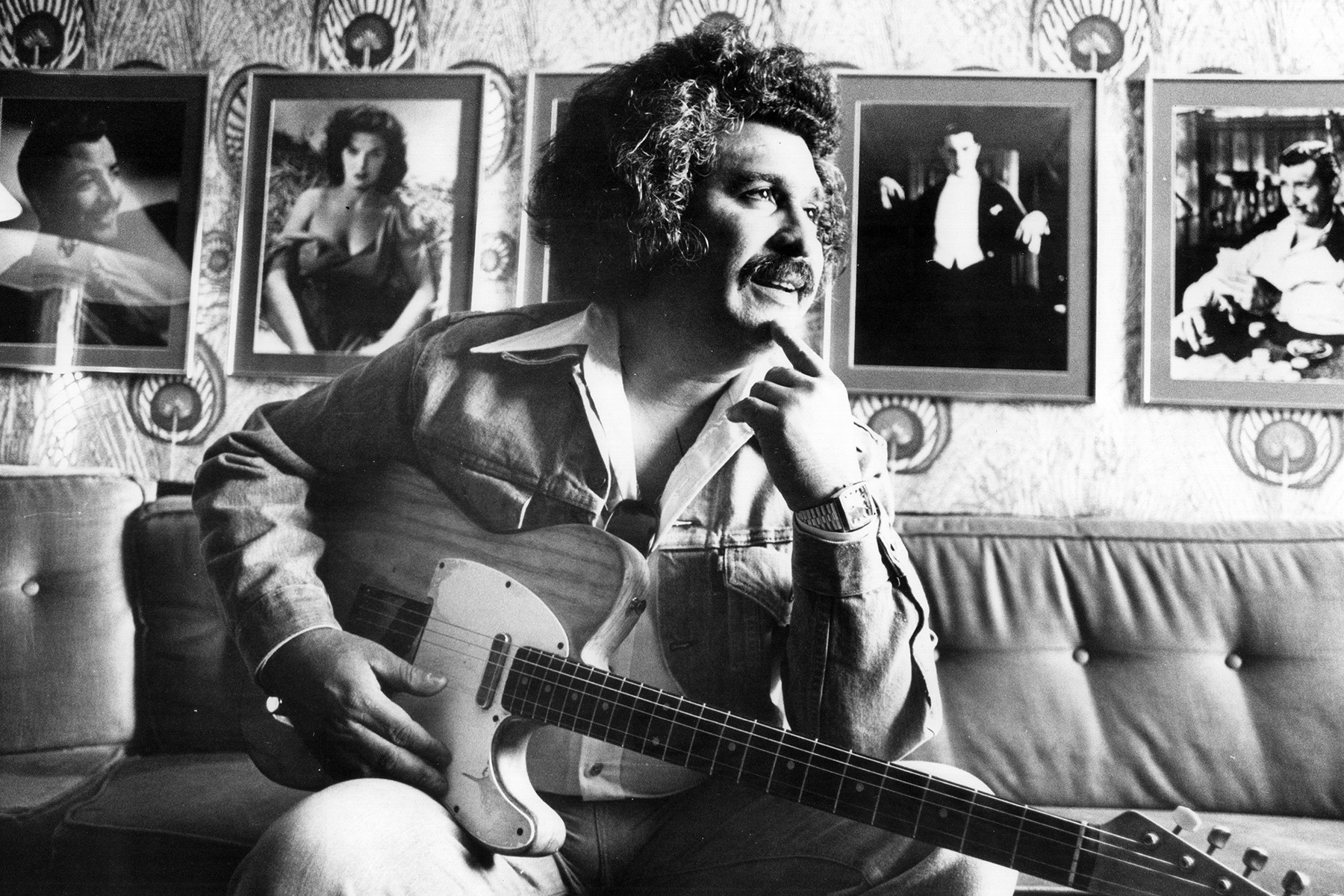 Freddy Fender portrait in Canada, 1975
Freddy Fender portrait in Canada, 1975
Image Credit: Graham Bezant/Toronto Star/Getty Images
“Before the Next Teardrop Falls,” originally written in 1967, had seen recordings by artists like Jerry Lee Lewis and Linda Martell before Tejano singer Freddy Fender transformed it into a crossover sensation in 1975. Fender’s ingenious twist was incorporating bilingual lyrics, blending English with Spanish. By embracing his cultural heritage as Baldemar Huerta, he crafted a cross-cultural classic that remains captivating today. Lasting just two minutes and 29 seconds, the song’s theme of steadfast loyalty to lost love evokes the spirit of Buddy Holly, another Texan music icon. This track revitalized Fender’s career, reaching Number One on both the Billboard pop and country charts, marking its significance in the realm of top country songs.
Dolly Parton, ‘Coat of Many Colors’
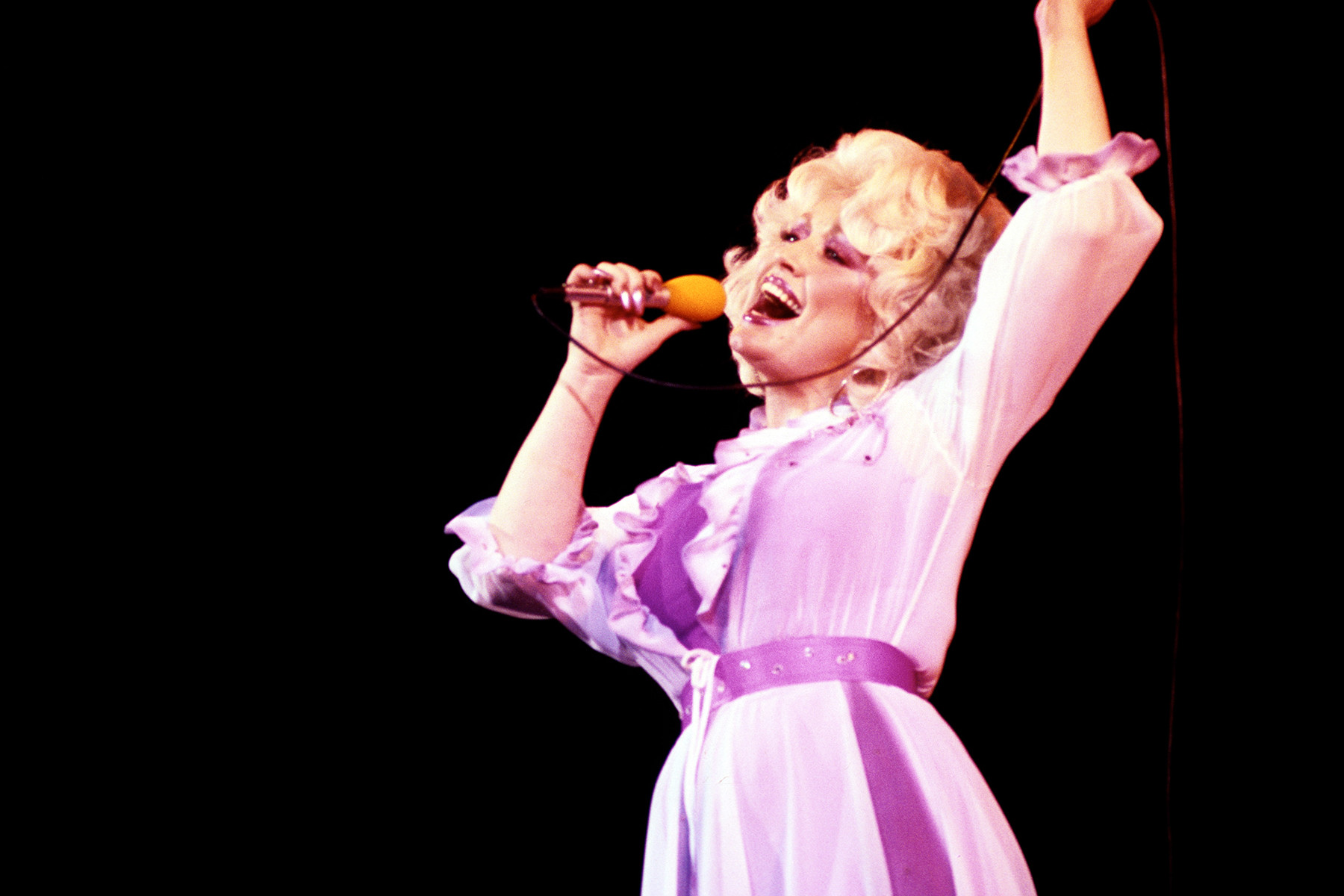 Dolly Parton portrait
Dolly Parton portrait
Image Credit: Richard E. Aaron/Redferns/Getty Images
“Coat of Many Colors” stands as Dolly Parton’s most personal hit, often cited as her favorite. It beautifully transposes the biblical tale of Joseph to Parton’s childhood in postwar Tennessee. The song celebrates the innocent pride in a coat lovingly stitched from rags by her mother. Parton penned this song on Porter Wagoner’s tour bus, using Wagoner’s dry-cleaning receipt as paper when inspiration struck. Wagoner, recognizing the song’s significance, later framed that receipt. The iconic coat itself, or a meticulously recreated version, is displayed at the Chasing Rainbows Museum in Dollywood, Parton’s theme park. This song, deeply rooted in personal history, is a testament to the storytelling power of top country songs.
Martina McBride, ‘Independence Day’
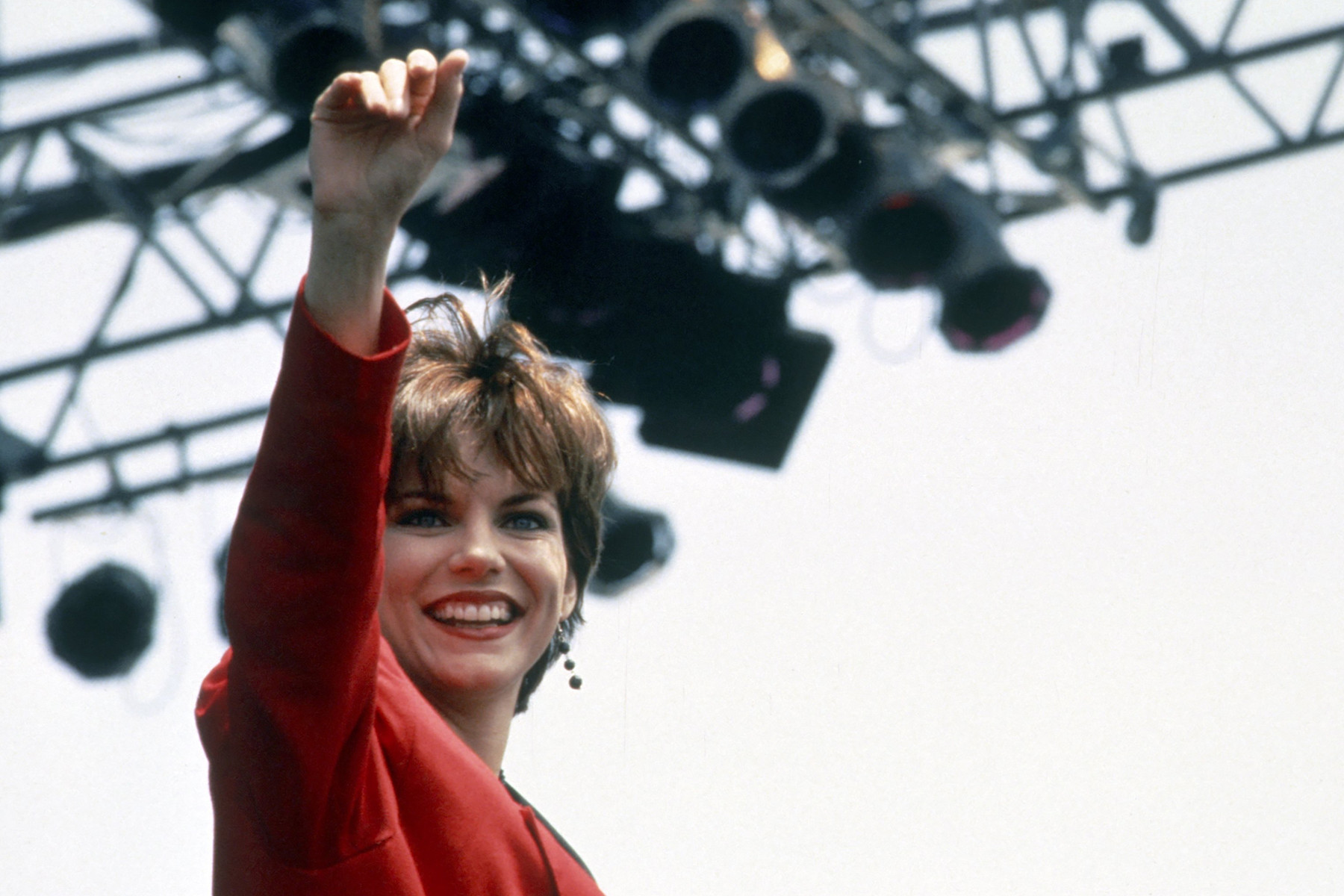 Martina McBride portrait circa 1970
Martina McBride portrait circa 1970
Image Credit: Rayn Barnett/Michael Ochs Archives/Getty Images
Gretchen Peters wrote “Independence Day” from the poignant perspective of an eight-year-old girl witnessing her mother’s suffering at the hands of an abusive, alcoholic father, culminating in the mother setting their house ablaze. The song’s powerful narrative propelled Martina McBride to become an advocate for domestic abuse awareness, helping her raise substantial funds for related charities. Despite its profound message, the song’s deeper meaning was notably missed by conservative commentator Sean Hannity, who used it as the theme for his 2001 radio program. Peters acknowledged the irony, stating that while Hannity might have overlooked the song’s true essence, the royalties enabled her to further support causes she believed in. “Independence Day” remains a significant song, addressing critical social issues within top country songs.
Patsy Montana, ‘I Want To Be a Cowboy’s Sweetheart’
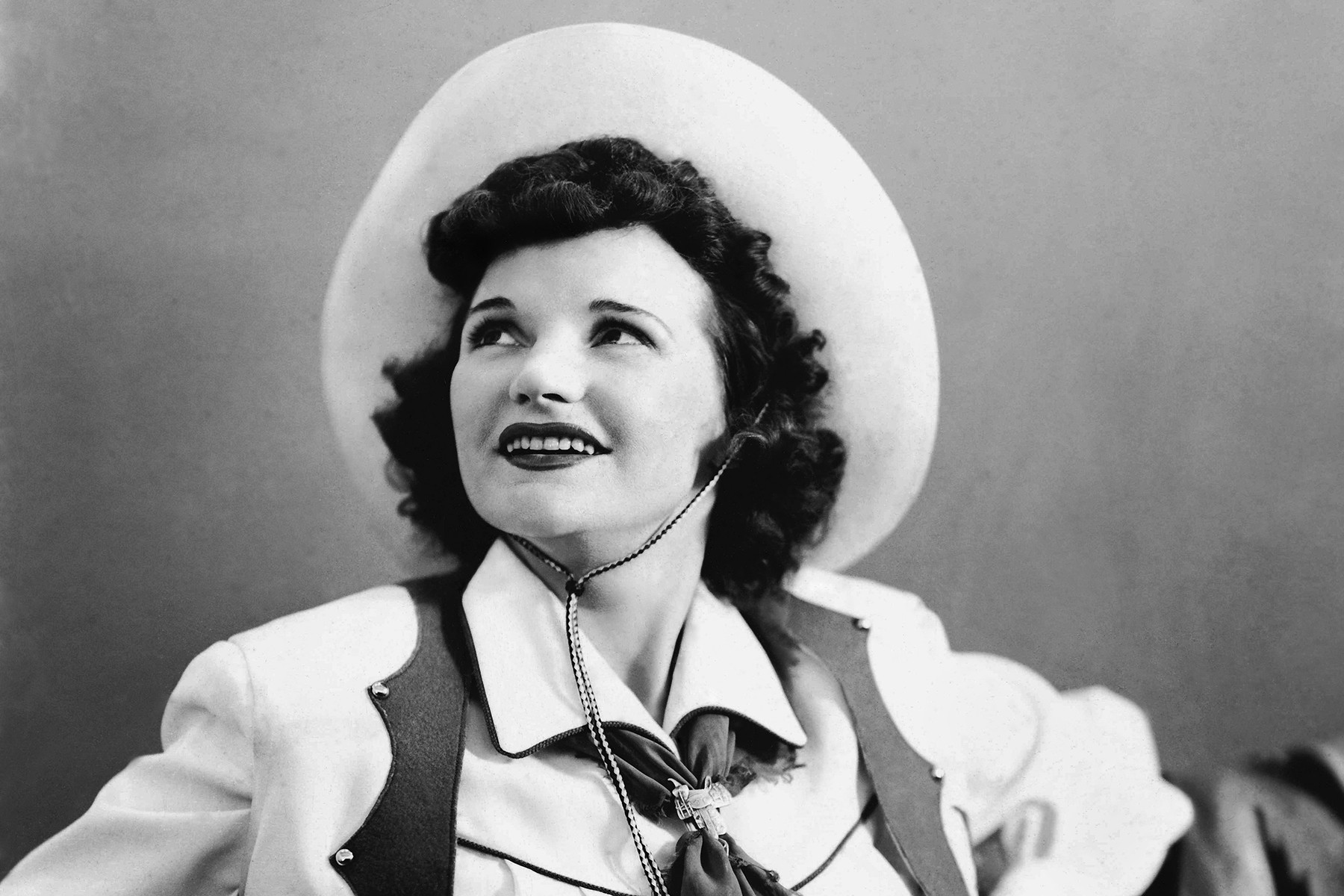 Patsy Montana portrait circa 1940
Patsy Montana portrait circa 1940
Image Credit: Michael Ochs Archives/Getty Images
“I Want To Be a Cowboy’s Sweetheart” achieved a historic milestone as the first million-selling record by a female country artist. This spirited yodeling tribute to the romanticized Wild West catapulted Ruby Blevins, known as Patsy Montana, into stardom. Montana, originally from Arkansas, was a singer, songwriter, actress, and fiddler inspired by Jimmie Rodgers. After working in radio, TV, and film in Los Angeles and New York, she joined the Kentucky string band the Prairie Ramblers. She adapted the early Western standard “Texas Plains,” first into “Montana Plains,” and finally into “I Want To Be a Cowboy’s Sweetheart,” establishing her iconic cowgirl persona. The song has been consistently covered by artists from Patti Page to The Chicks and even featured on The Voice. This enduring popularity confirms its status among top country songs.
Hank Williams, ‘Lost Highway’
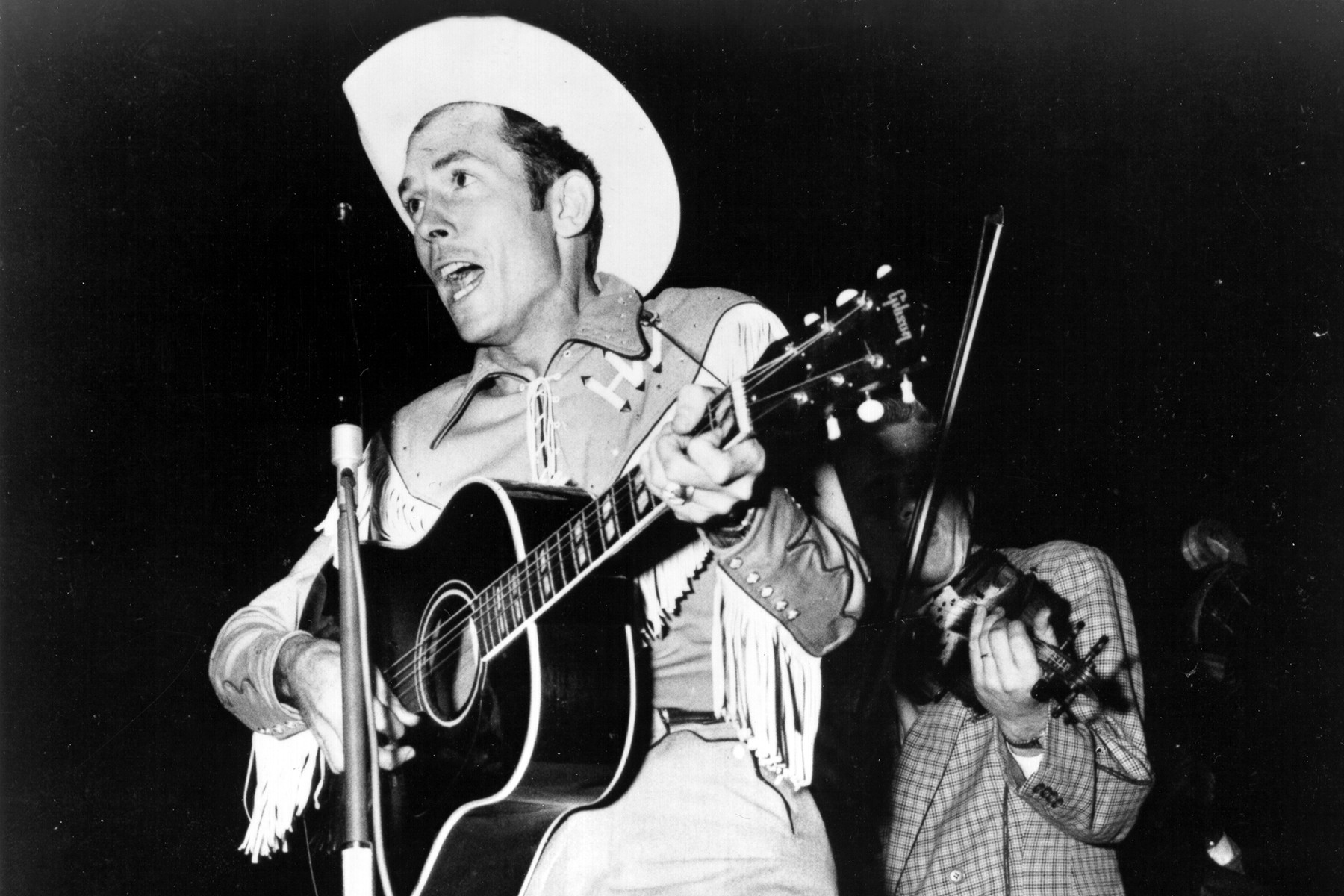 Hank Williams performing at Hadacol Caravan Show in 1951
Hank Williams performing at Hadacol Caravan Show in 1951
Image Credit: Michael Ochs Archives/Getty Images
“Lost Highway” profoundly embodies the tragic country music mythos that characterized Hank Williams’s life and untimely death. Interestingly, Williams did not write this quintessential song. Leon Payne, a blind country singer-songwriter, penned and recorded “Lost Highway” just a year prior to Williams’s version. Payne’s song was not merely metaphorical; it stemmed from his real-life struggle of being stranded on the highway, unsuccessfully hitchhiking from California to Texas to visit his sick mother, eventually seeking refuge in a Salvation Army. Williams’s rendition amplified the song’s haunting themes, making it a cornerstone of top country songs that explore themes of despair and fate.
Jimmie Rodgers, ‘Blue Yodel No. 1 (T for Texas)’
 Jimmie Rodgers portrait circa 1930
Jimmie Rodgers portrait circa 1930
Image Credit: BMI/Michael Ochs Archives/GettyImages
“Blue Yodel No. 1 (T for Texas)” marked the beginning of country music’s first true superstar, Jimmie Rodgers. This track was the first in a series of 13 yodeling records by the “Singing Brakeman.” It emerged three months after a modest recording session in Bristol, Tennessee, organized by Ralph Peer, a traveling record executive. These sessions, held in a former hat factory, also famously captured the Carter Family for the first time. Rodgers pursued Peer to New York, leading him to Camden, New Jersey, where he recorded the song that would define his legacy. The allure of Rodgers’s yodel lay in its unique sound—slippery yet controlled, melancholic yet casual, refined yet strangely otherworldly. It conveyed pain in a charming, almost sweet manner. This song not only established Rodgers but also significantly shaped the early sound of top country songs.
Brooks & Dunn, ‘Neon Moon’
 Brooks & Dunn performing at San Jose Arena in 1998
Brooks & Dunn performing at San Jose Arena in 1998
Image Credit: Tim Mosenfelder/ImageDirect/Getty Images
“Neon Moon,” featuring Ronnie Dunn’s signature vocal performance, was a standout track from Brooks & Dunn’s debut album, Brand New Man, achieving Number One status along with three other singles. Kix Brooks added vocal harmonies, while Dunn’s lead vocals painted a vivid scene of heartbreak and desolation that paradoxically felt like a refuge. Despite the themes of loneliness and loss, Dunn infused a glimmer of optimism into the lyrics. He explained to CMT that he learned to always include “a ray of hope” in songwriting. “Neon Moon” embodies this, suggesting solace can be found even in solitude, under the glow of a neon light. Kacey Musgraves recognized the song’s enduring appeal, reimagining it as a shimmering electro-pop version with Brooks & Dunn for her collaborative album Reboot in 2019, highlighting its versatility among top country songs.
George Jones, ‘The Grand Tour’
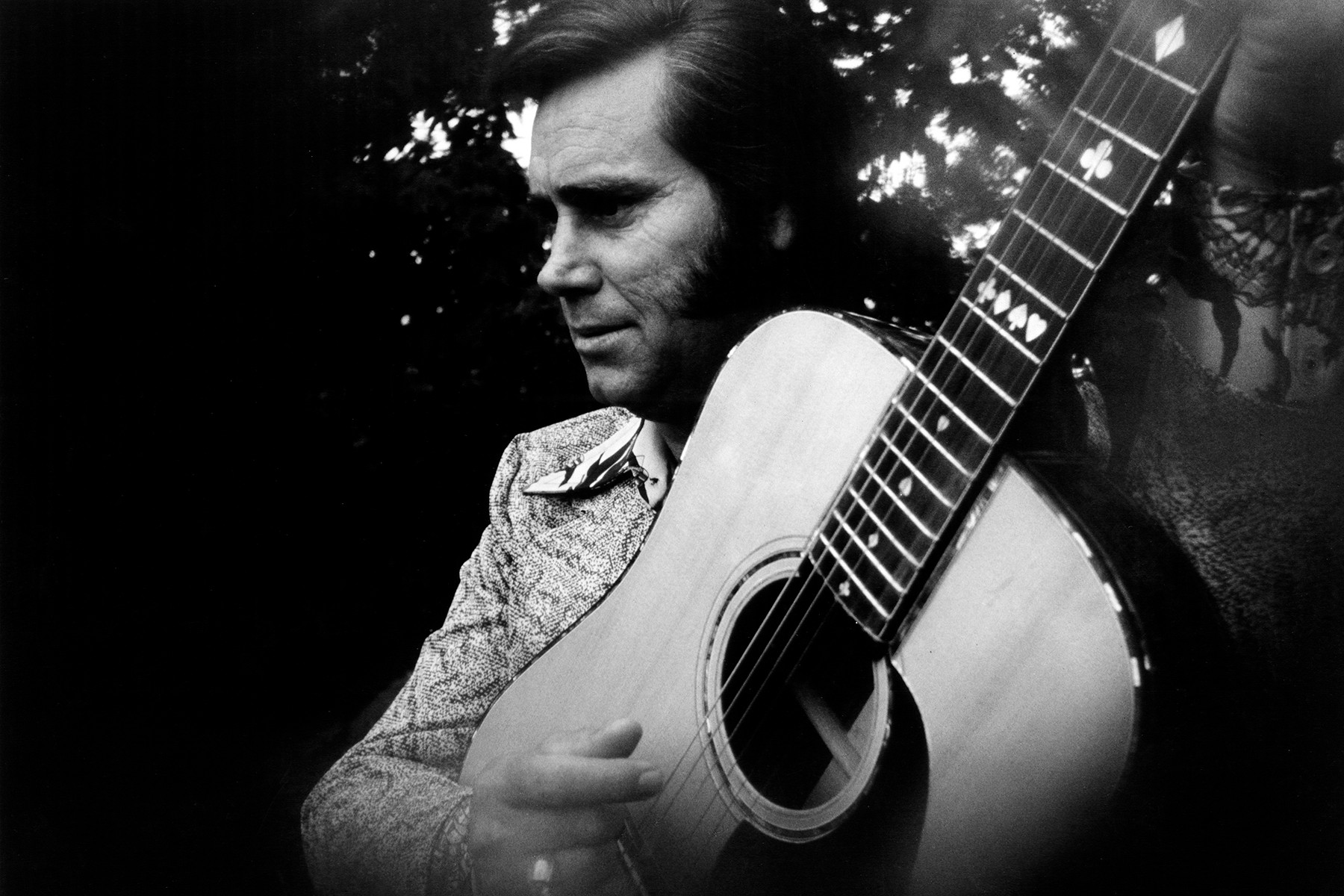 George Jones playing acoustic guitar circa 1975
George Jones playing acoustic guitar circa 1975
Image Credit: Gems/Redferns/Getty Images
In “The Grand Tour,” George Jones, known as the Possum, masterfully portrays a deserted husband and father leading a stranger through a home filled with memories, now devoid of love. The genius of the song lies in Jones’s emotionally charged voice, which evokes a haunting sense of loss amidst producer Billy Sherrill’s opulent arrangement of strings, guitars, and chorus. Written by Norro Wilson, Carmol Taylor, and George Richey, “The Grand Tour” served as the title track of Jones’s masterful 1974 album. Despite Jones’s admitted struggles with alcohol during recording, the song subtly conveys the protagonist’s pain without explicitly stating the cause of his despair. Jones’s performance is incredibly detailed, each syllable conveying the heartbreak of a man trapped in a house full of possessions but empty of love, making it a deeply moving entry among top country songs.
Gary Stewart, ‘She’s Actin’ Single, I’m Drinkin’ Doubles’
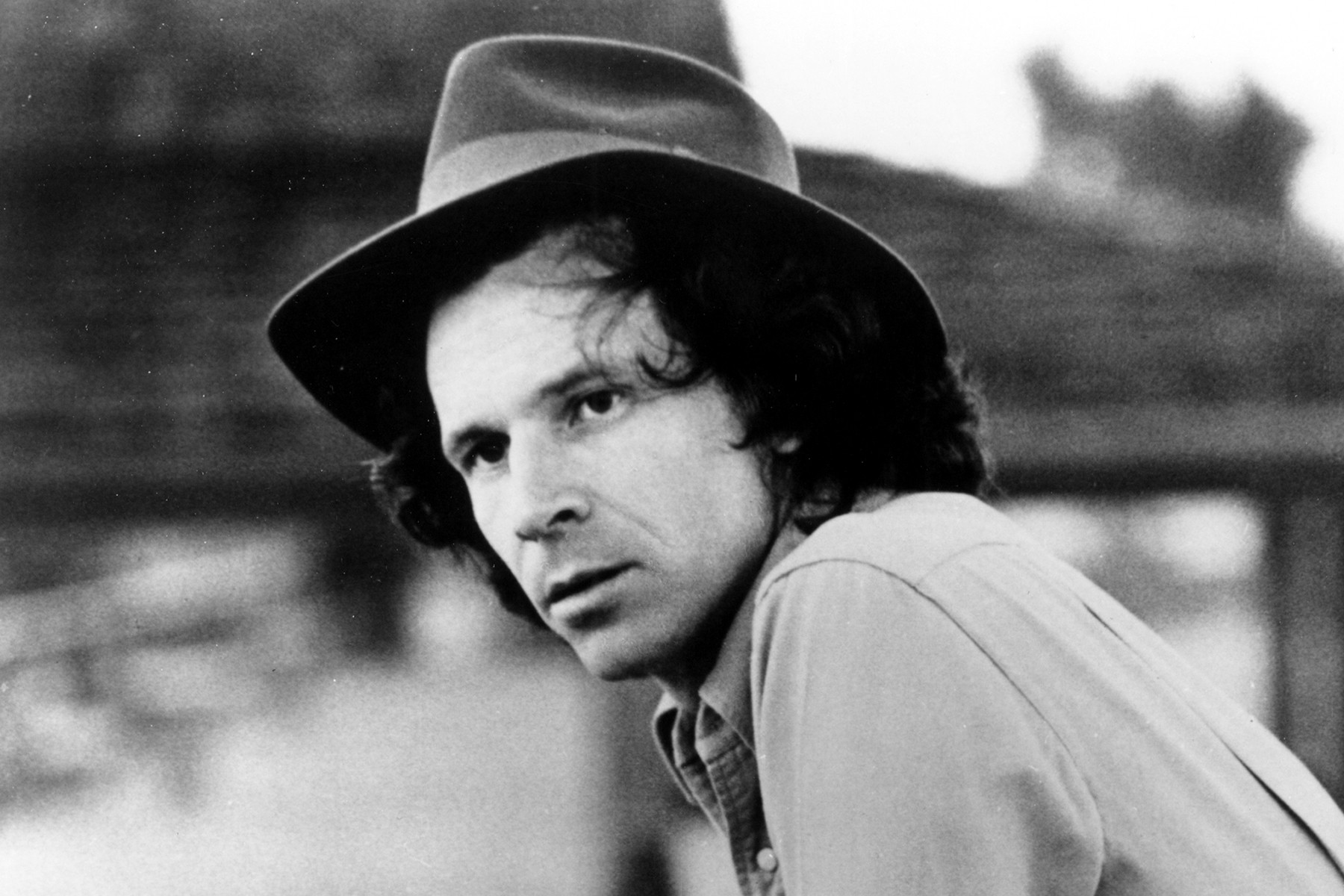 Gary Stewart portrait circa 1970
Gary Stewart portrait circa 1970
Image Credit: Michael Ochs Archives/Getty Images
“She’s Actin’ Single, I’m Drinkin’ Doubles,” Gary Stewart’s sole Number One hit, encapsulates a trifecta of hurt, infidelity, and drinking. While it might seem like a honky-tonk parody, Stewart’s intensely emotional tenor makes it utterly convincing. This hardcore country hit arrived at a time when the genre was becoming more polished. The song depicts Stewart in a perpetual nightmare, witnessing his love interest with another while he seeks solace in alcohol. Written by Wayne Carson, the track was the third hit from Stewart’s acclaimed album Out of Hand. It features John Hughey’s poignant pedal steel guitar and backing vocals from the Jordanaires, a gospel quartet associated with Elvis Presley. Stewart’s portrayal of self-pity resonated deeply with listeners in jukebox bars, solidifying its place as one of the top country songs about heartbreak and drinking.
Loretta Lynn, ‘Don’t Come Home A Drinkin’ (With Lovin’ on Your Mind)’
 Loretta Lynn portrait 1970
Loretta Lynn portrait 1970
Image Credit: Sylvia Pitcher/Redferns/Getty Images
Loretta Lynn, in her 1976 autobiography, Coal Miner’s Daughter, reflected on her limited entertainment options due to financial constraints and family responsibilities. She mentioned her husband, Doo’s, penchant for socializing and drinking with friends. This context sets the stage for her assertive 1966 hit, “Don’t Come Home A Drinkin’ (With Lovin’ on Your Mind).” Co-written with her sister Peggy Sue, this song was Lynn’s first Number One and a spirited rejection of unwanted marital advances after a night of drinking. It sparked a humorous feud, including Jay Lee Webb’s 1967 response song, “I Come Home A Drinkin’ (To a Worn-Out Wife Like You).” Gretchen Wilson’s 2010 cover offers a more contemporary, rave-up interpretation, but Lynn’s original remains a definitive statement among top country songs about female empowerment and marital dynamics.
Townes Van Zandt, ‘Pancho and Lefty’
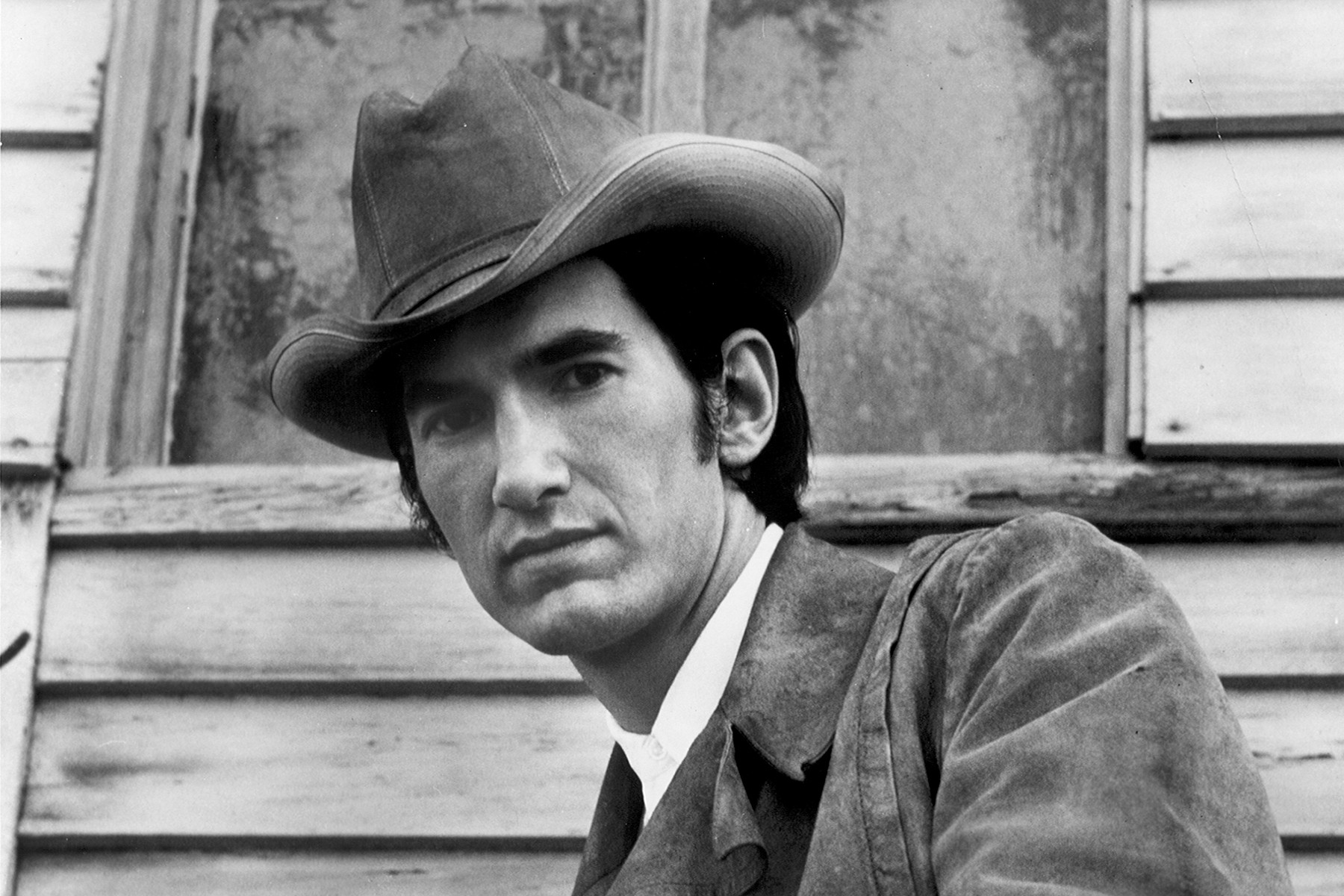 Townes Van Zandt portrait circa 1970
Townes Van Zandt portrait circa 1970
Image Credit: Michael Ochs Archives/Getty Images
Townes Van Zandt, often hailed as the poet laureate of Texas country, crafted “Pancho and Lefty,” a song that transcends typical narratives of betrayal by making the betrayer a figure of sympathy. This song is often compared to The Great Gatsby in its depth, conveying complex themes of friendship, deceit, and guilt more profoundly than many novels. The ballad recounts the story of Pancho Villa’s demise and his betrayal by Lefty. While Pancho’s suffering ends with his death, Lefty endures a lingering torment, living with guilt and hiding in anonymity. Van Zandt poignantly captures this with the line, “The dust that Pancho bit down south/Ended up in Lefty’s mouth.” Willie Nelson and Merle Haggard’s cover topped the country charts in 1983, further cementing the song’s status as one of the top country songs with rich storytelling.
Kacey Musgraves, ‘Follow Your Arrow’
 Kacey Musgraves portrait in Washington, DC 2013
Kacey Musgraves portrait in Washington, DC 2013
Image Credit: Matt McClain/The Washington Post/Getty Images
Kacey Musgraves’s breakthrough song, “Follow Your Arrow,” sparked conversations and controversy with its message of individualism and acceptance. Musgraves commented on the song’s inclusive message, hoping listeners would embrace the idea that everyone should be free to love and live authentically, regardless of societal norms. The song subtly challenges the establishment to catch up with evolving social values. While censored at the Country Music Association Awards, it was celebrated by the Gay & Lesbian Alliance Against Defamation. Musgraves, at 25, became a prominent voice for progressive values in country music. However, “Follow Your Arrow,” like much of her debut album, Same Trailer, Different Park, is less an attack on conservatism and more a universal call against any system that stifles personal freedom, whether related to sexuality or lifestyle choices, making it a significant and forward-thinking addition to top country songs.
Garth Brooks, ‘Friends in Low Places’
 Garth Brooks portrait in Los Angeles, 1990
Garth Brooks portrait in Los Angeles, 1990
Image Credit: Lester Cohen/Getty Images
Garth Brooks, with a voice that combined Johnny Cash’s depth and Hank Williams’s high-pitched emotion, was on the cusp of superstardom when “Friends in Low Places” was released. The recording session itself turned into a party, with songwriters Dewayne Blackwell and Earl “Bud” Lee joining in to create the boisterous bar atmosphere heard in the song’s final refrain. This hit song propelled Brooks’s second album, No Fences, to sell 17 million copies in the U.S., making it one of the top 10 best-selling albums of all time. Brooks’s Grammy performance of “Friends in Low Places” in the early Nineties became iconic. He contrasted the posh, black-tie setting by appearing in boots and casual western wear, eventually transforming the stage into a down-to-earth saloon, mirroring the song’s themes and resonating with audiences nationwide. This anthem of carefree camaraderie is undoubtedly one of the top country songs for a celebratory sing-along.
Waylon Jennings, ‘Are You Sure Hank Done It This Way’
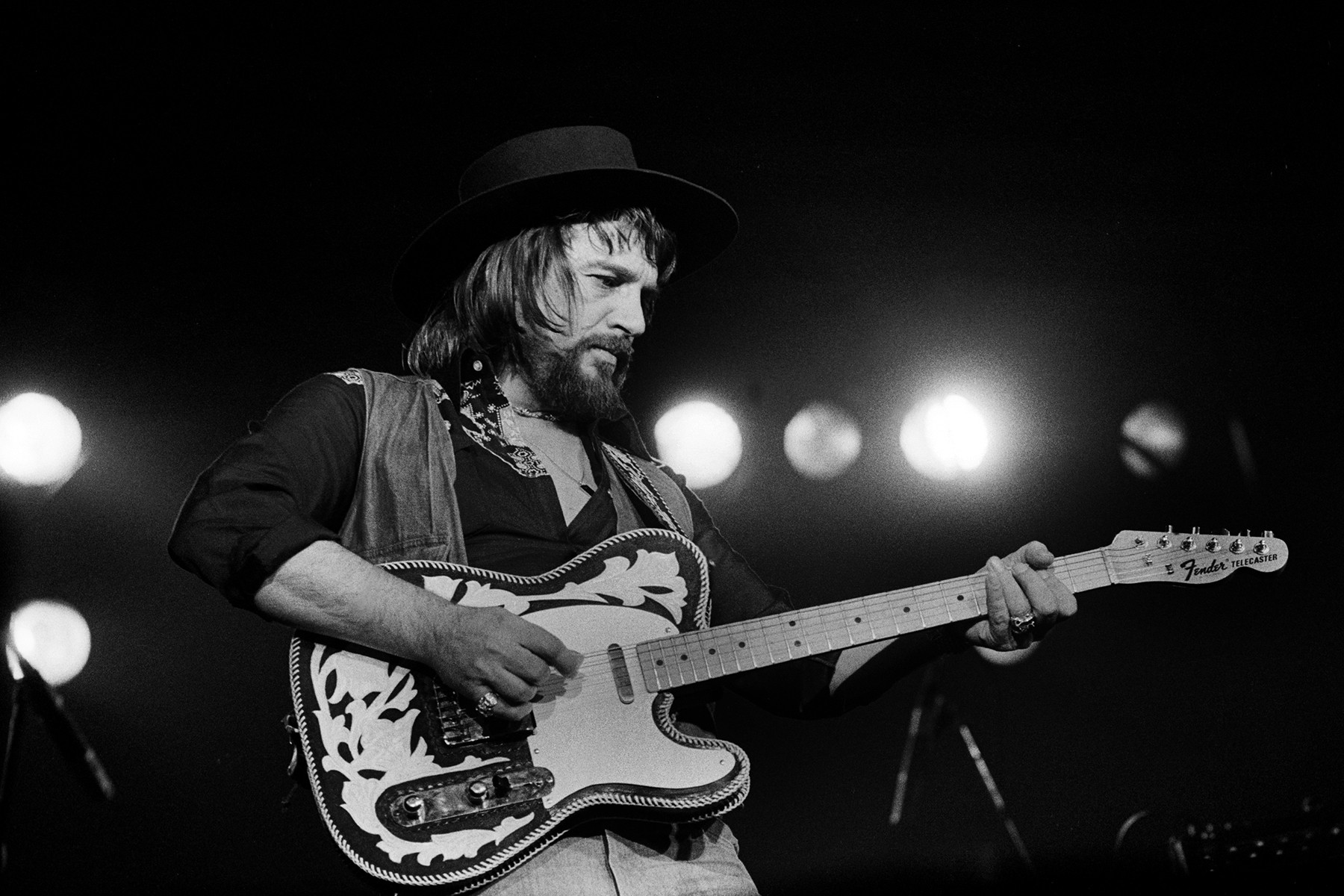 Waylon Jennings performing onstage in 1977
Waylon Jennings performing onstage in 1977
Image Credit: Paul Natkin/Getty Images
“Are You Sure Hank Done It This Way” serves as the closest thing to an official mission statement for outlaw country. Waylon Jennings, dressed in black and sporting a beard, directly challenged the era of “rhinestone suits and new shiny cars.” Written on an envelope en route to a recording session with Sun Records veteran “Cowboy” Jack Clement, the song is both a defiant statement distinguishing Jennings from Nashville’s mainstream and a declaration of artistic freedom. Jennings, who often wore Hank Williams’s boots, considered Williams his “outlaw hero.” In his autobiography, Jennings expressed a desire to emulate Williams’s rebellious spirit, romanticizing his flaws and envisioning a life of artistic dedication even at personal cost. This song is a powerful declaration in the landscape of top country songs, marking a shift towards a more rebellious country sound.
The Everly Brothers, ‘Bye Bye Love’
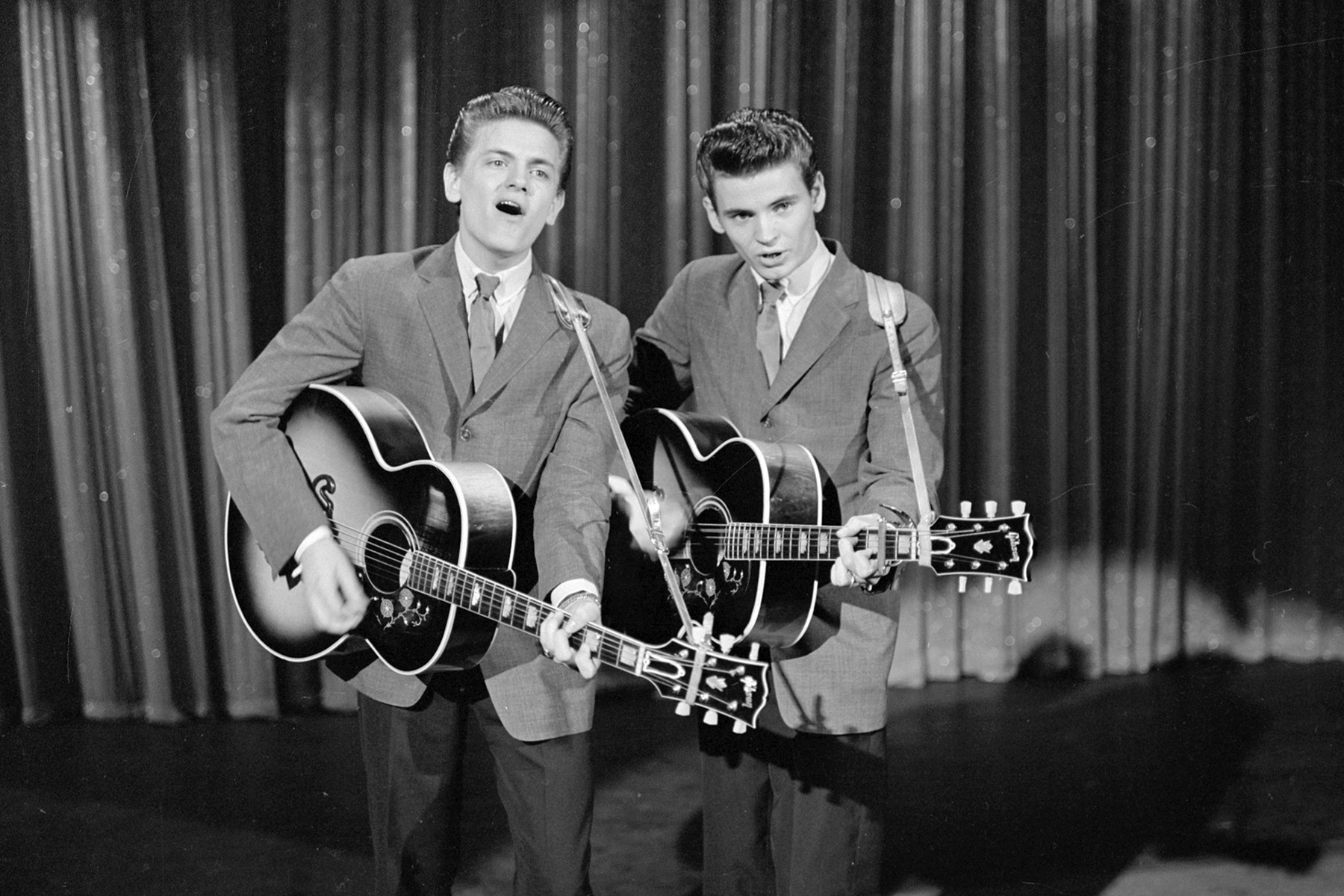 The Everly Brothers, Phil and Don, singing and playing guitar
The Everly Brothers, Phil and Don, singing and playing guitar
Image Credit: CBS Photo Archive/Getty Images
“Bye Bye Love” catapulted the Everly Brothers to stardom, becoming a crossover hit in 1957, reaching the Top Five on country, pop, and R&B charts. Recorded with a stellar band featuring Elvis Presley’s pianist, the Grand Ole Opry’s drummer, and guitarist Chet Atkins, the song’s success was undeniable. While Don Everly borrowed the introductory guitar riff from an earlier song, “Give Me a Future,” the brothers didn’t write “Bye Bye Love.” However, they infused it with their signature style, enhancing a standard chord progression with Tennessee twang and their iconic harmonies. This track showcases the Everly Brothers’ unique contribution to top country songs, blending country with pop sensibilities.
The Carter Family, ‘Wildwood Flower’
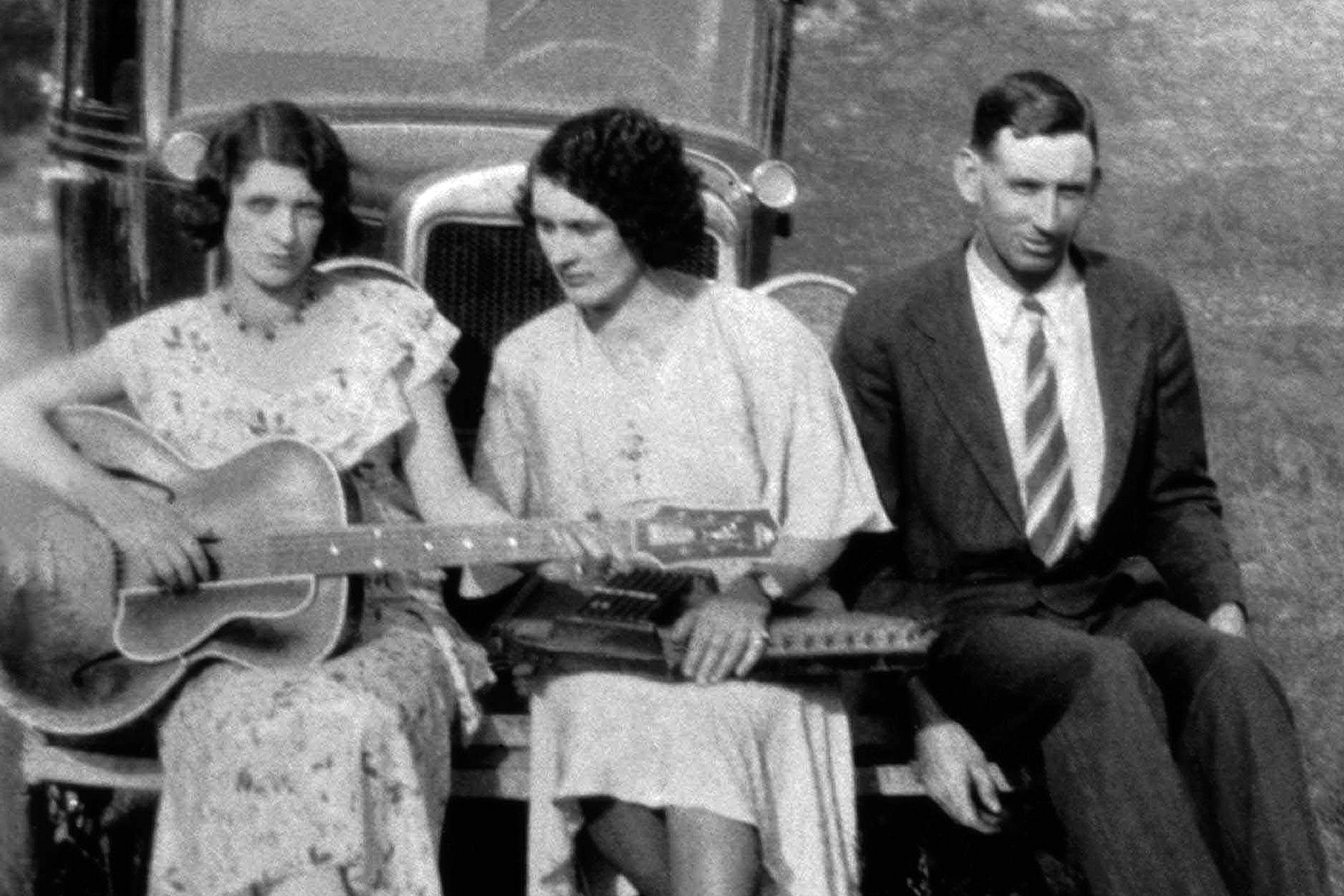 The Carter Family portrait circa 1930
The Carter Family portrait circa 1930
Image Credit: Donaldson Collection/Getty Images
“Wildwood Flower” began as a 1860s parlor song, “I’ll Twine ‘Mid the Ringlets,” depicting a maiden’s spirited response to being jilted. A.P. Carter, a Virginia “song catcher,” revived it for his family trio. He arranged the song for his wife Sara, who sang and played the autoharp, and her cousin Maybelle, who played lead guitar. They recorded it outside Philadelphia on Maybelle’s 19th birthday. Over time, the opening lyrics morphed through oral tradition. “I’ll twine mid the ringlets of my raven black hair” transformed into “Oh, I’ll twine with my mane, golden weeping black hair,” and continued to evolve as it was covered by artists like Joan Baez, Emmylou Harris, and Reese Witherspoon. Despite numerous renditions, none are as eccentric as country comedian Dan Bowman’s 1964 parody, “Wildwood Weed.” The Carter Family’s version remains a foundational piece in the history of top country songs.
Porter Wagoner, ‘A Satisfied Mind’
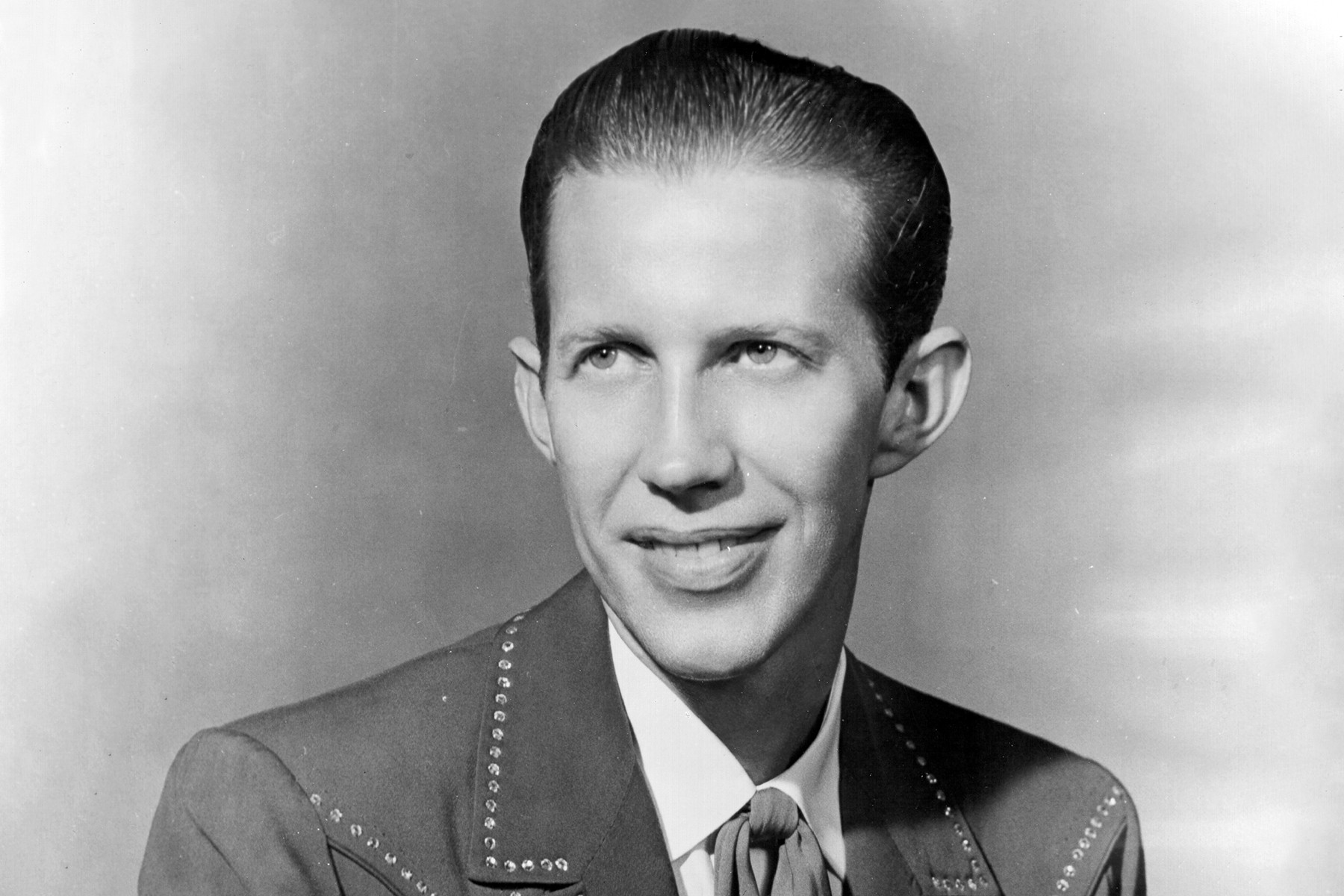 Porter Wagoner portrait circa 1959
Porter Wagoner portrait circa 1959
Image Credit: Michael Ochs Archives/Getty Images
“A Satisfied Mind” originated from a conversation between co-writer Red Hayes and his father-in-law about the definition of true wealth. His father-in-law posited that “the richest man in the world is the man with a satisfied mind.” Porter Wagoner’s demo, recorded at a Missouri radio station in 1954, became the hit version, reaching Number One on the country chart the following year. This song, the most famous by Wagoner, known as Mr. Grand Ole Opry, became an unlikely standard among country-rock revivalists. Artists like The Byrds, Bob Dylan, Gram Parsons, David Allan Coe, Lucinda Williams, and Jeff Buckley have all recorded their versions. This widespread appeal underscores its timeless message and places it among the most covered and top country songs.
Shania Twain, ‘Man! I Feel Like a Woman!’
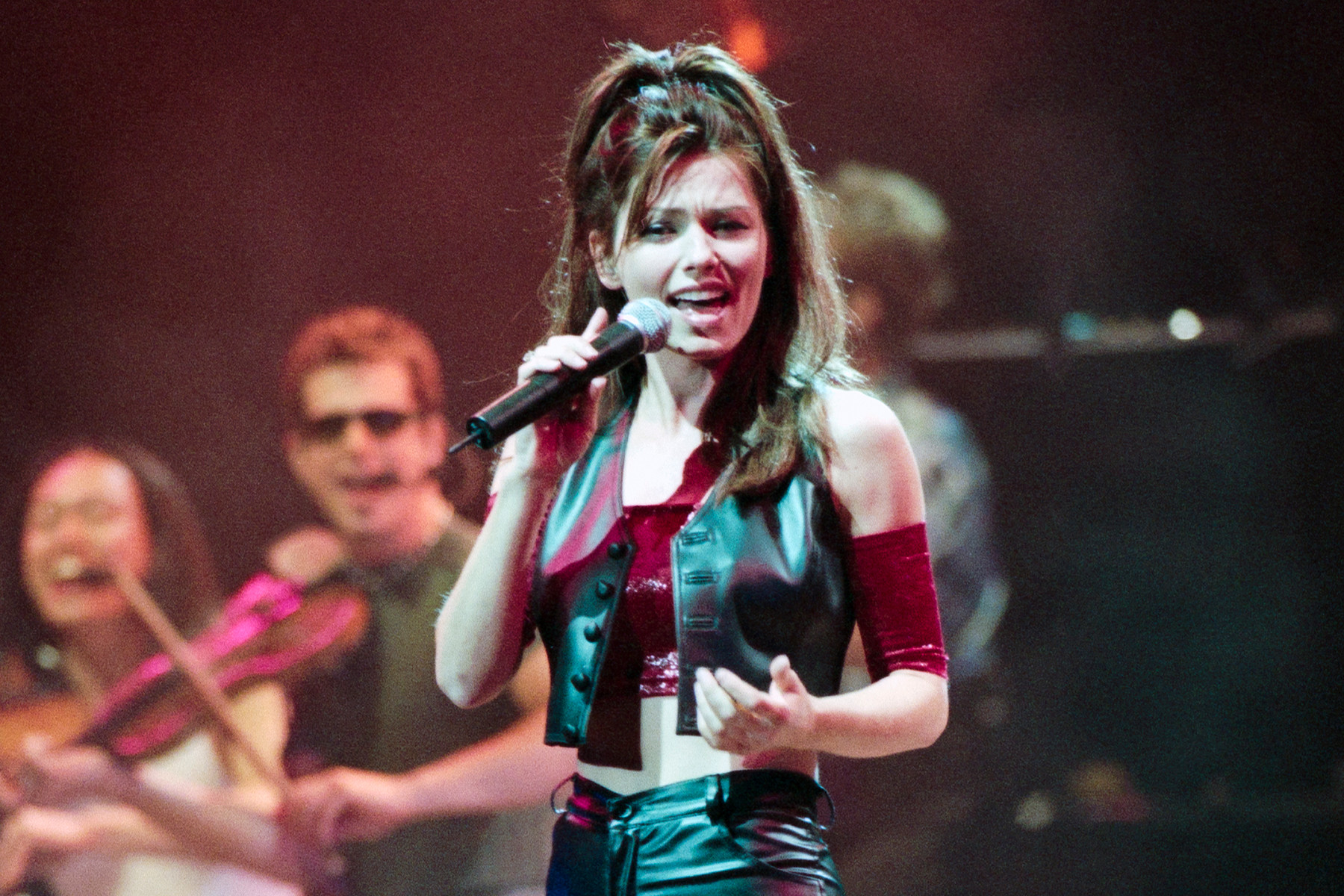 Shania Twain performing in concert in 1998
Shania Twain performing in concert in 1998
Image Credit: Bob Riha, Jr./Getty Images
“Man! I Feel Like a Woman!” solidified Shania Twain’s status as a superstar, capping off a series of hits that defined 1990s pop country and propelled her to global fame. Even before this song, Twain was already a star, but this anthem took her to another level. Produced by Mutt Lange, her then-husband, the song features big drums, guitars, and synthy horn blasts, supporting Twain’s powerful vocals in a girl-power anthem that resonated across an era saturated with such themes. With its catchy hooks and chorus, it’s considered the ultimate country karaoke song. This song’s impact on pop country and its enduring popularity make it a definitive example of top country songs that bridge genres.
Mississippi Sheiks, ‘Sitting on Top of the World’
 Mississippi Sheiks, ‘Sitting on Top of the World’ album cover
Mississippi Sheiks, ‘Sitting on Top of the World’ album cover
“Sitting on Top of the World” by the Mississippi Sheiks is less straightforward country and more blues infused with rural fiddle. It traversed through various musical landscapes, from Western swing artists like Bob Wills and Milton Brown to blues interpretations by Howlin’ Wolf and rock versions by the Grateful Dead and Cream. This diverse history illustrates the song’s adaptability, eventually circling back to Chet Atkins, the Nitty Gritty Dirt Band, and Willie Nelson. Recently, Jack White championed the Mississippi Sheiks, reissuing their catalog, drawn to their raw and authentic sound. This song’s journey through different genres underscores its foundational influence and unique place among top country songs that defy easy categorization.
Hank Williams, ‘Your Cheatin’ Heart’
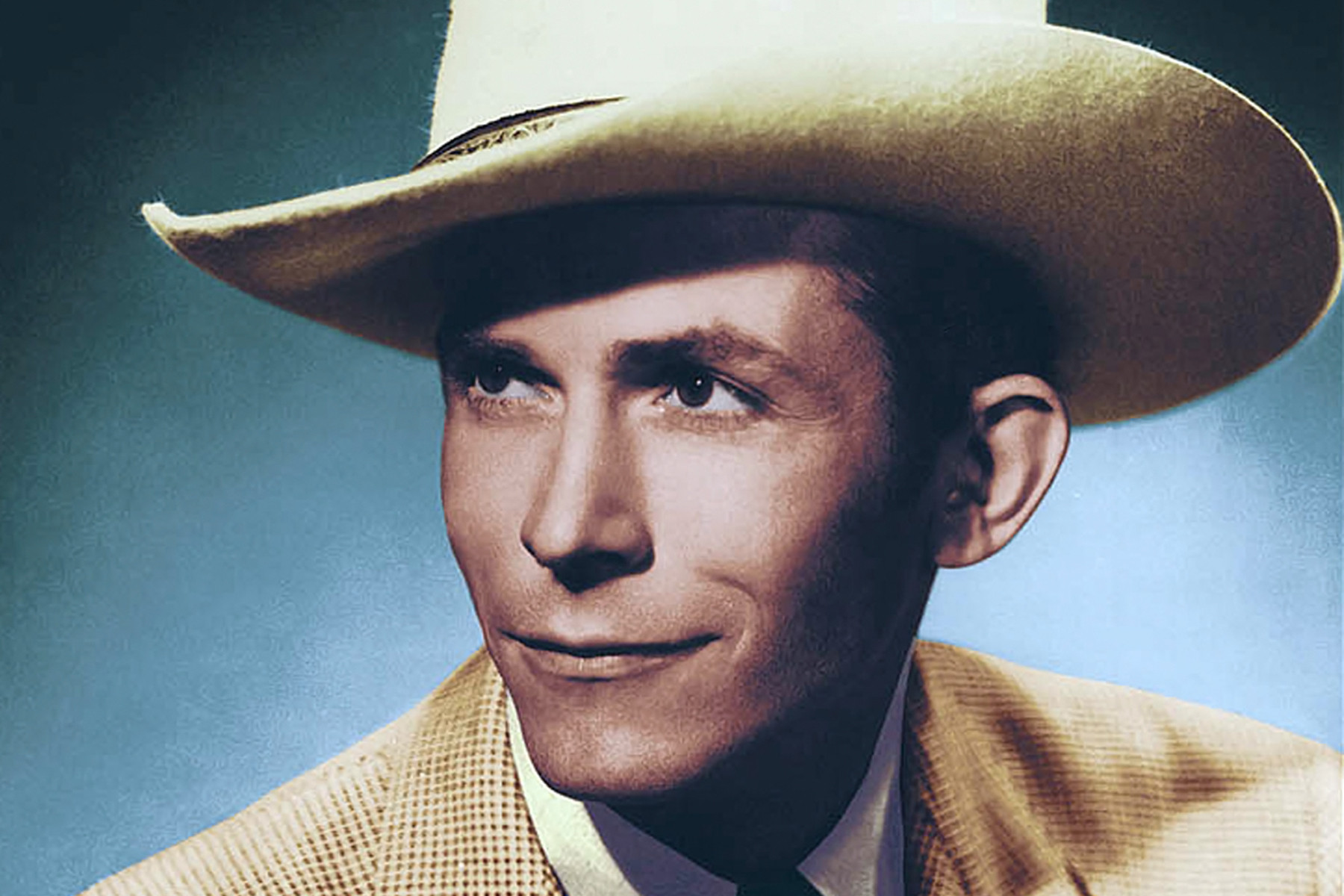 Hank Williams portrait circa 1948
Hank Williams portrait circa 1948
Image Credit: GAB Archive/Redferns/Getty Images
Did Hank Williams pen “Your Cheatin’ Heart,” arguably his greatest “heart” song, as a reflection on his tumultuous personal life? His second wife claimed he wrote it out of spite toward his first wife while driving in a convertible with her. Regardless of the exact circumstances, Williams was indeed entangled in complex relationships at the time. The song poignantly explores the consequences of infidelity. With Don Helms’s mournful pedal steel guitar enhancing the sorrowful atmosphere, Williams laments the fate of a cheater. Completed in a single take during his final recording session, it was released posthumously and immediately soared to Number One. This song’s raw emotion and timeless theme ensure its place among the top country songs about heartbreak and regret.
Willie Nelson, ‘Blue Eyes Crying in the Rain’
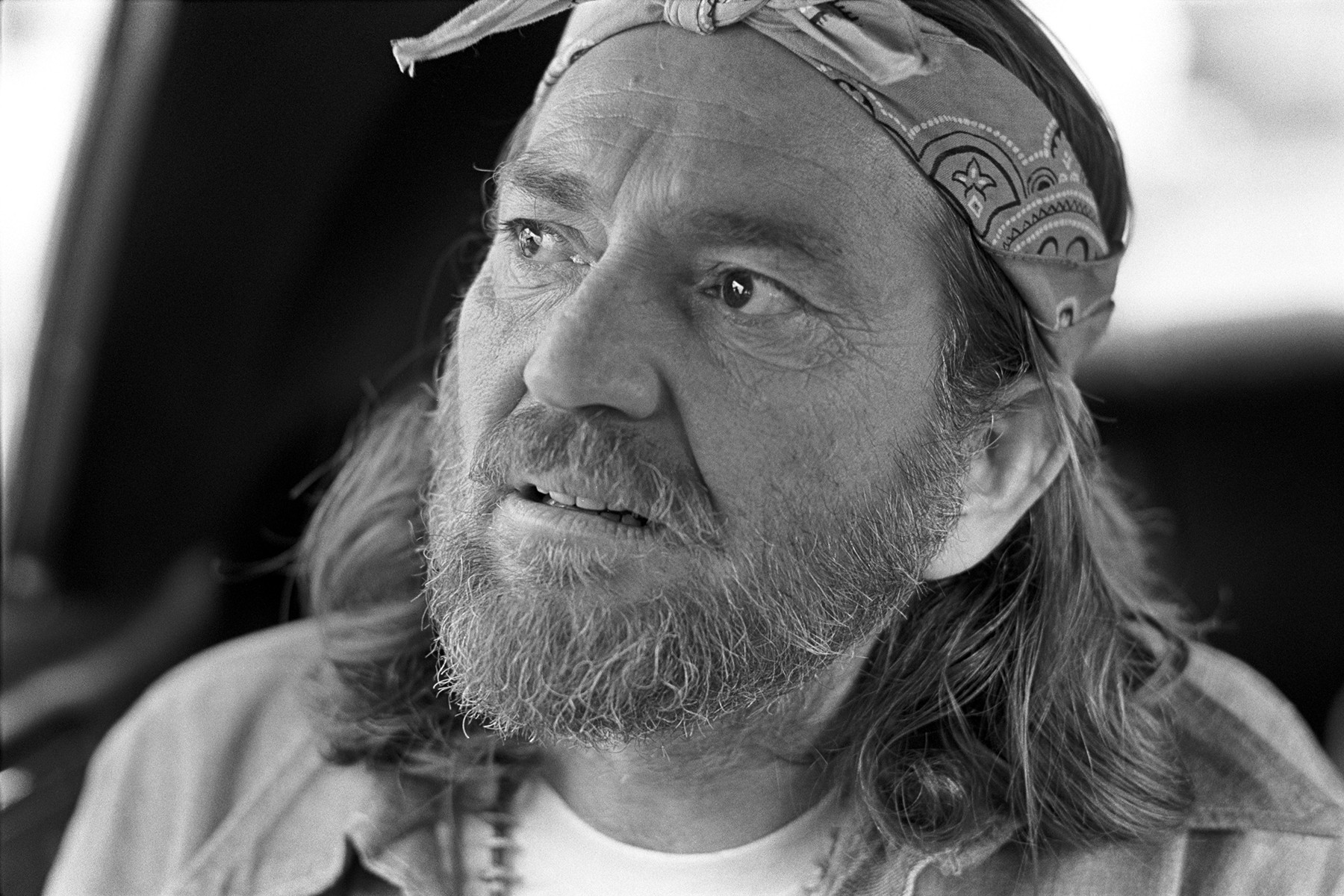 Willie Nelson promoting his record
Willie Nelson promoting his record
Image Credit: Tom Hill/Getty Images
“Blue Eyes Crying in the Rain,” written by Fred Rose in the Forties, had been recorded by numerous artists before Willie Nelson transformed it into his signature song. It became the centerpiece of his 1975 breakthrough album, Red Headed Stranger. Michael Streissguth’s book Outlaw: Waylon, Willie, Kris, and the Renegades of Nashville recounts a pivotal moment when record label executives, initially apprehensive about the album’s raw sound, organized a press listening session at Nashville’s Exit/In club. To their surprise, “Blue Eyes” received a standing ovation. This stripped-down, emotionally resonant track, lacking the typical Nashville “bells and whistles,” defied industry expectations and became Nelson’s first country Number One hit. It marks a significant moment in top country songs history, celebrating authenticity over polished production.
Faron Young, ‘Hello Walls’
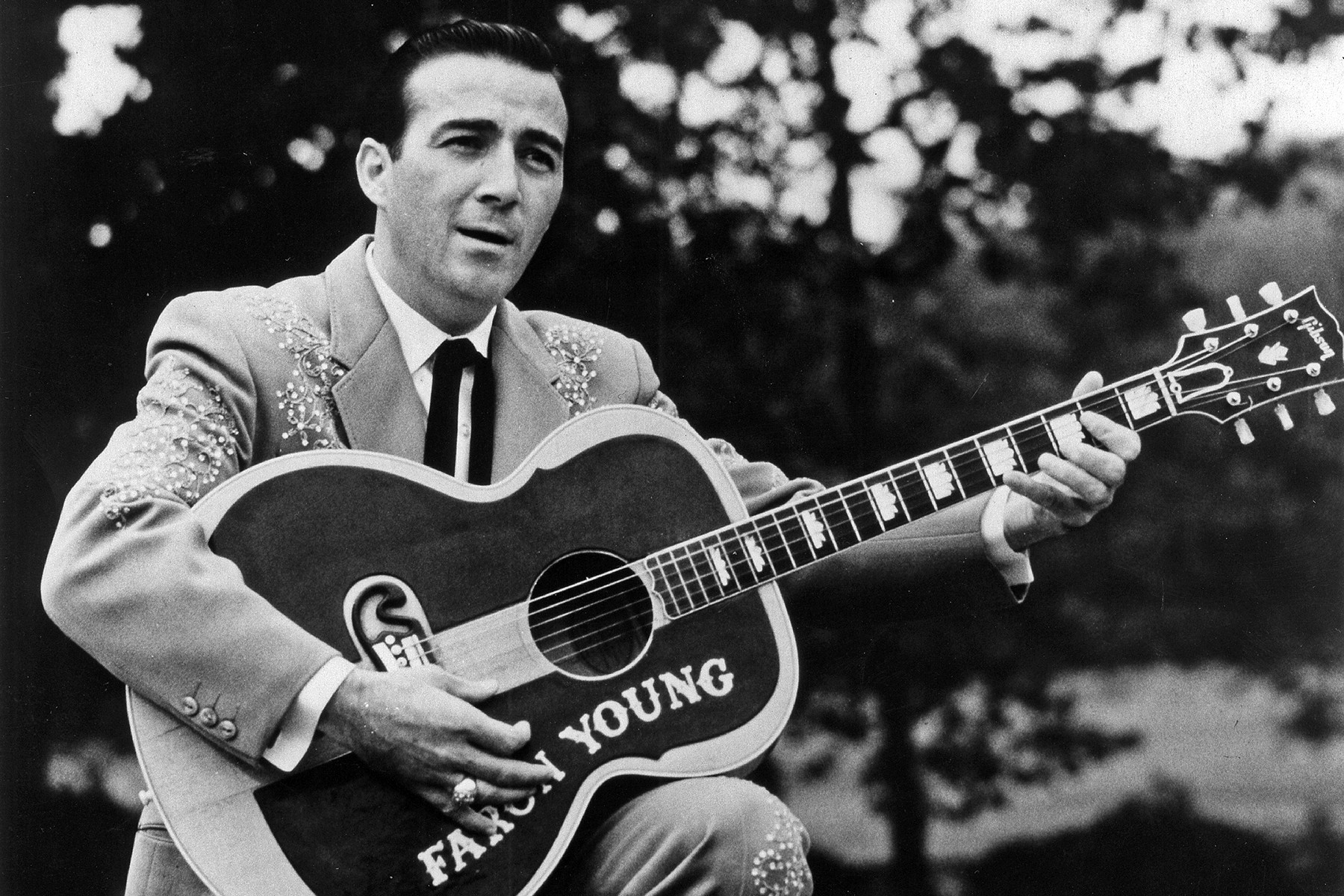 Faron Young portrait circa 1965
Faron Young portrait circa 1965
Image Credit: Michael Ochs Archives/Getty Images
“Hello Walls” was penned by Willie Nelson during a songwriting session with Lefty Frizzell. When Frizzell briefly left, Nelson conceived the idea for his first major hit. Faron Young, known as the “Hillbilly Heartthrob,” recorded it, imbuing it with a unique elegance that resonated widely. The song topped the country chart and even broke into the pop charts, reaching Number 12. In classic country song tradition, “Hello Walls” uses wit to express heartbreak. The song portrays a lonely singer conversing with inanimate objects in an empty room, poignantly asking, “I bet you dread to spend another lonely night with me.” This blend of humor and pathos makes it a standout among top country songs.
Johnny Cash, ‘Ring of Fire’
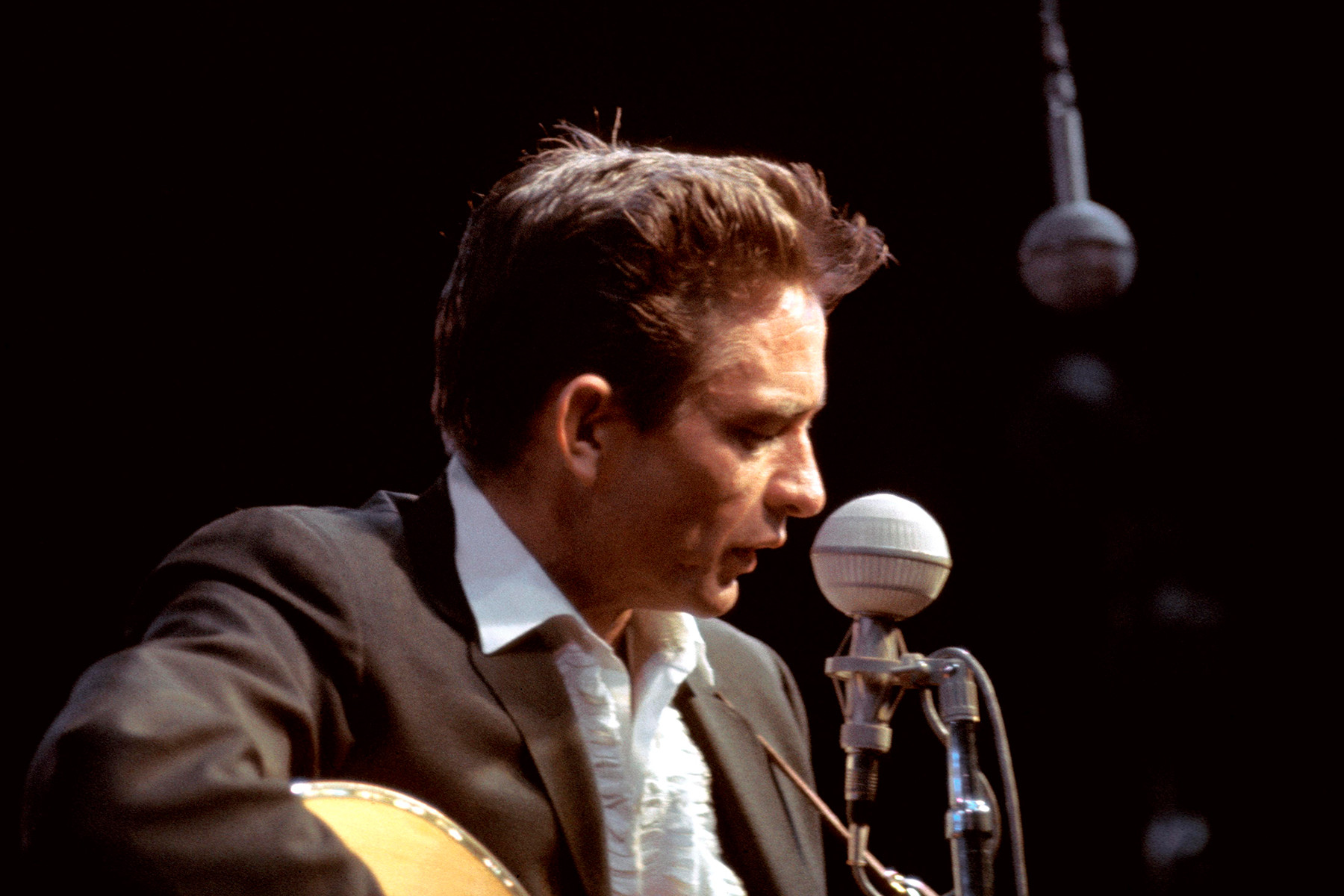 Johnny Cash performing at Newport Folk Festival
Johnny Cash performing at Newport Folk Festival
Image Credit: Gai Terrell/Redferns/Getty Images
Johnny Cash, the “Man in Black,” was known for his rebellious spirit and dramatic flair, perfectly exemplified in “Ring of Fire.” Written by Merle Kilgore and June Carter (with some accounts suggesting Cash’s contribution to the lyrics), the song was initially recorded as an acoustic folk tune by June’s sister, Anita Carter. When her version didn’t achieve success, Cash revamped it with mariachi horns, electric guitar, and his powerful voice, backed by Mother Maybelle and the Carter sisters. Released in 1963, “Ring of Fire” dominated the country charts for seven weeks. Despite attempts to commercialize it, including a rejected Preparation H ad pitch, the song remains a revered classic, covered by rock bands like Eric Burdon and the Animals and Social Distortion. Its iconic status firmly places it among top country songs.
Charlie Rich, ‘Behind Closed Doors’
 Charlie Rich portrait
Charlie Rich portrait
Image Credit: David Redfern/Redferns/Getty Images
Charlie Rich, known as the Silver Fox, had spent two decades navigating between his rock and jazz roots and Nashville’s mainstream. “Behind Closed Doors” became his breakthrough hit, bridging this gap. Producer Billy Sherrill noted that radio programmers found Rich too bluesy for country and too country for other genres. The “right song” was needed. Sherrill and his team started with a riff by Kevin O’Dell and blended traditional country with orchestral elements, including an 11-piece string section. This combination propelled “Behind Closed Doors” to success, earning Rich two Grammys and the CMA Entertainer of the Year award. The song’s sophisticated sound and broad appeal make it a notable entry in top country songs.
The Chicks, ‘Goodbye Earl’
 The Dixie Chicks at the American Music Awards in 1999
The Dixie Chicks at the American Music Awards in 1999
Image Credit: Ron Wolfson/Hulton Archive/Getty Images
“Goodbye Earl” by The Chicks generated controversy upon release due to its theme of domestic abuse revenge, but songwriter Dennis Linde intended it as black comedy, akin to Arsenic and Old Lace. The song tells the story of a woman who poisons her abusive husband, Earl, with black-eyed peas and then celebrates with her best friend. Chick Emily Robinson downplayed the controversy with sarcasm, stating they weren’t promoting murder and had a disclaimer on their album, suggesting black-eyed peas as a “gentler way to go.” Despite the controversy, the song’s dark humor and empowering message resonated with many, making it a memorable and talked-about addition to top country songs.
Stanley Brothers, ‘Man of Constant Sorrow’
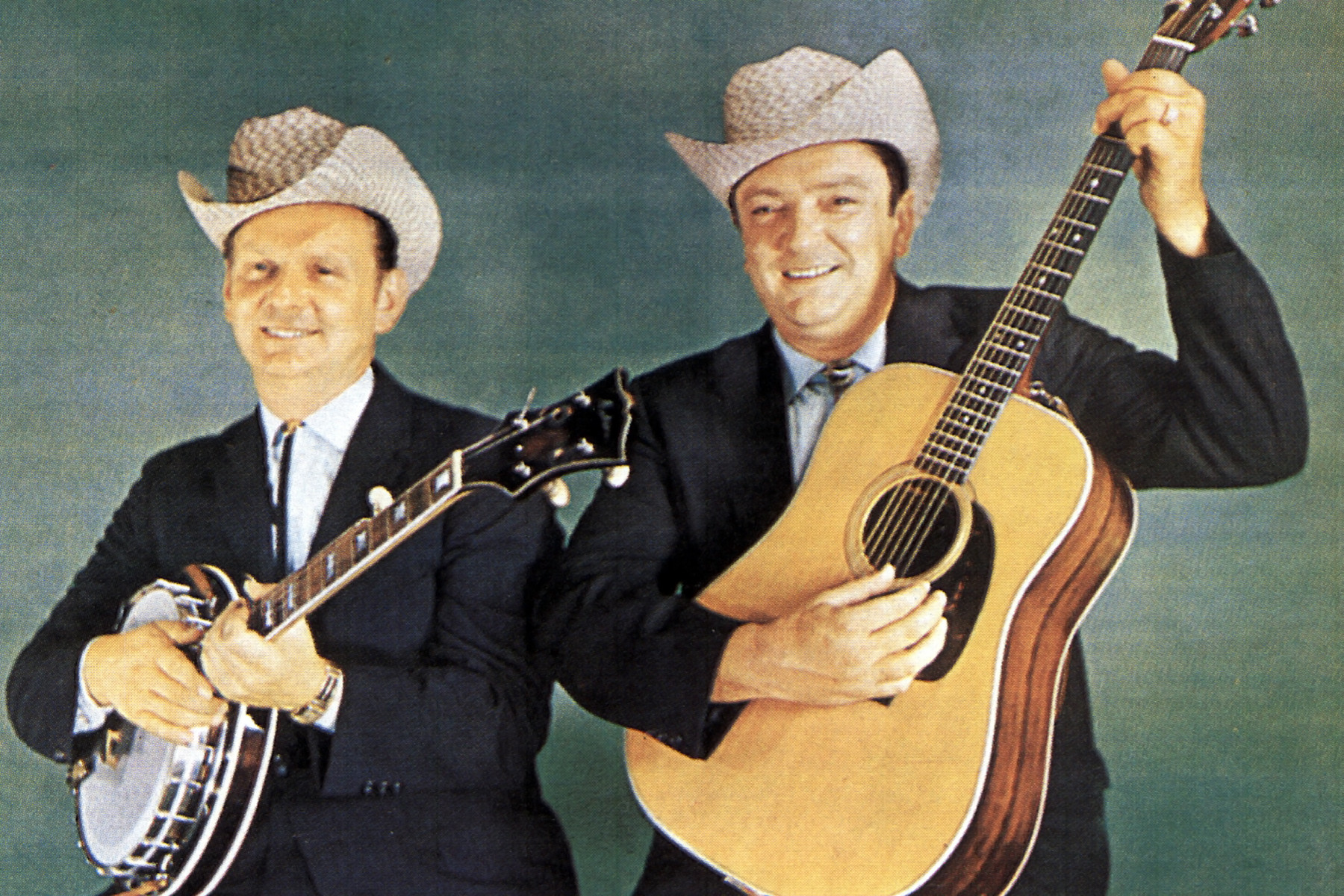 Ralph Stanley and Carter Stanley of the Stanley Brothers
Ralph Stanley and Carter Stanley of the Stanley Brothers
Image Credit: GAB Archive/Redferns/Getty Images
“Man of Constant Sorrow,” likely originating as a 19th-century Baptist hymn, was revived by the Stanley Brothers in 1951. It gained further popularity through covers by Joan Baez, Bob Dylan, and Judy Collins in the 1960s and experienced a full-scale Americana revival after its prominent use in the Coen brothers’ film O Brother, Where Art Thou? in 2000. Its origins are somewhat unclear, attributed to blind Kentucky fiddler Dick Burnett, who published it in 1913 as “Farewell Song.” Ralph Stanley recalled hearing his father sing a version, which he and his brother Carter adapted, creating a high, lonesome sound that became a landmark of post-breakup melancholy. Its journey from a hymn to a bluegrass standard and then a movie soundtrack hit demonstrates its enduring appeal and status among top country songs.
Kenny Rogers, ‘The Gambler’
 Kenny Rogers performing onstage in London
Kenny Rogers performing onstage in London
Image Credit: David Redfern/Redferns/Getty Images
Kenny Rogers described “The Gambler” as a “home run” the moment he heard it. Don Schlitz wrote most of this iconic story-song in 1976, inspired during a walk home from a Music Row meeting, but struggled for six weeks to complete the final verse. Producer Larry Butler offered the song to both Johnny Cash and Rogers, ultimately believing Rogers would make it a hit. Butler’s prediction proved accurate. “The Gambler” became Rogers’s signature song, topping the country chart, earning him a Grammy, and inspiring a series of TV movies where Rogers himself starred as the Gambler. This narrative-driven song, with its life lessons framed around a poker game, is undoubtedly one of the most iconic top country songs.
Taylor Swift, ‘Mean’
 Taylor Swift performing onstage at Nashville Rising benefit concert
Taylor Swift performing onstage at Nashville Rising benefit concert
Image Credit: Ed Rode/Nashville Rising/Getty Images for Nashville Rising
Taylor Swift’s “Mean” from her 2010 album Speak Now addresses bullies and critics with a banjo-infused, upbeat melody. It reached Number Two on the country charts and Number 11 on the Billboard Hot 100, capturing the sting of hurtful words. Its power lies in its empowering message for victims of bullying, drawing from Swift’s experiences, including criticism after a Grammy duet with Stevie Nicks. The song balances country elements with a pop sensibility, appealing to both country fans and foreshadowing Swift’s crossover pop superstardom. “Mean” is a significant track among top country songs that address social issues and personal resilience.
Charley Pride, ‘Kiss an Angel Good Mornin’ ‘
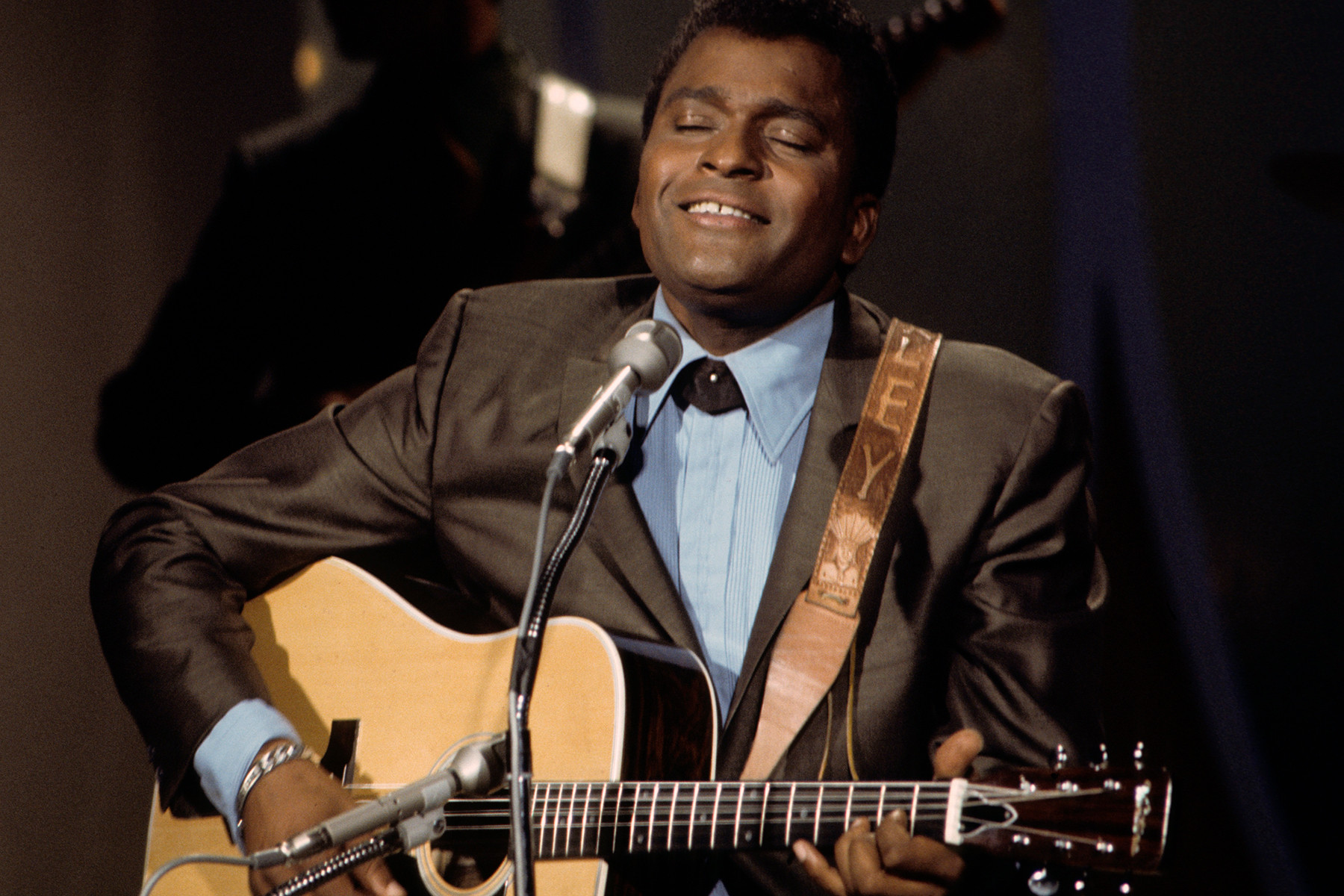 Charley Pride on The Johnny Cash Show
Charley Pride on The Johnny Cash Show
Image Credit: ABC Photo Archives/Disney General Entertainment Content/Getty Images
Charley Pride’s 1971 rendition of Ben Peters’ “Kiss an Angel Good Mornin’ ” remains the definitive version, surpassing attempts by Conway Twitty, George Jones, and Alan Jackson. The piano-driven arrangement is classic early-Seventies countrypolitan, propelling Pride’s only crossover Top 40 pop hit. Pride’s smooth, effortless vocal style perfectly suits this affectionate ode to domestic bliss, reminiscent of modern love anthems. This song’s crossover success and timeless charm make it a standout among top country songs.
Lefty Frizzell, ‘If You’ve Got the Money, I’ve Got the Time’
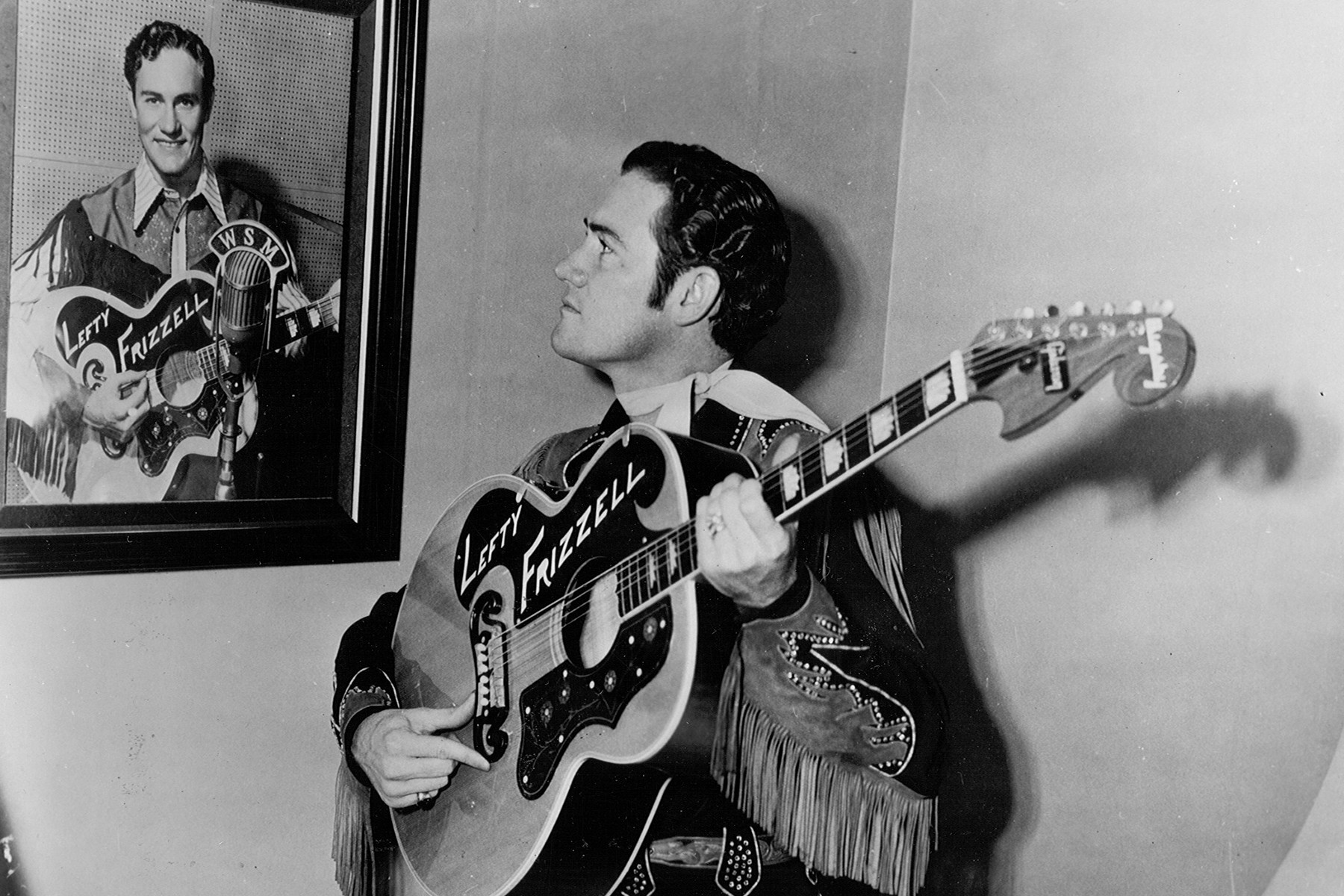 Lefty Frizzell portrait circa 1970
Lefty Frizzell portrait circa 1970
Image Credit: Michael Ochs Archives/Getty Images
Lefty Frizzell, with his gentle drawl, made even his most rowdy songs sound smooth. His debut single, “If You’ve Got the Money, I’ve Got the Time,” influenced generations of country vocalists. Covered by artists like George Jones, Merle Haggard, and Willie Nelson, it became an instant honky-tonk hit, selling 500,000 copies in just two months. Frizzell co-wrote the song with A&R man Jim Beck, inspired by a friend’s invitation to go out one night. Frizzell’s casual reply, “Well if you got the money, I got the time,” sparked the idea for this classic, making it a cornerstone of top country songs.
Ernest Tubb, ‘Walking the Floor Over You’
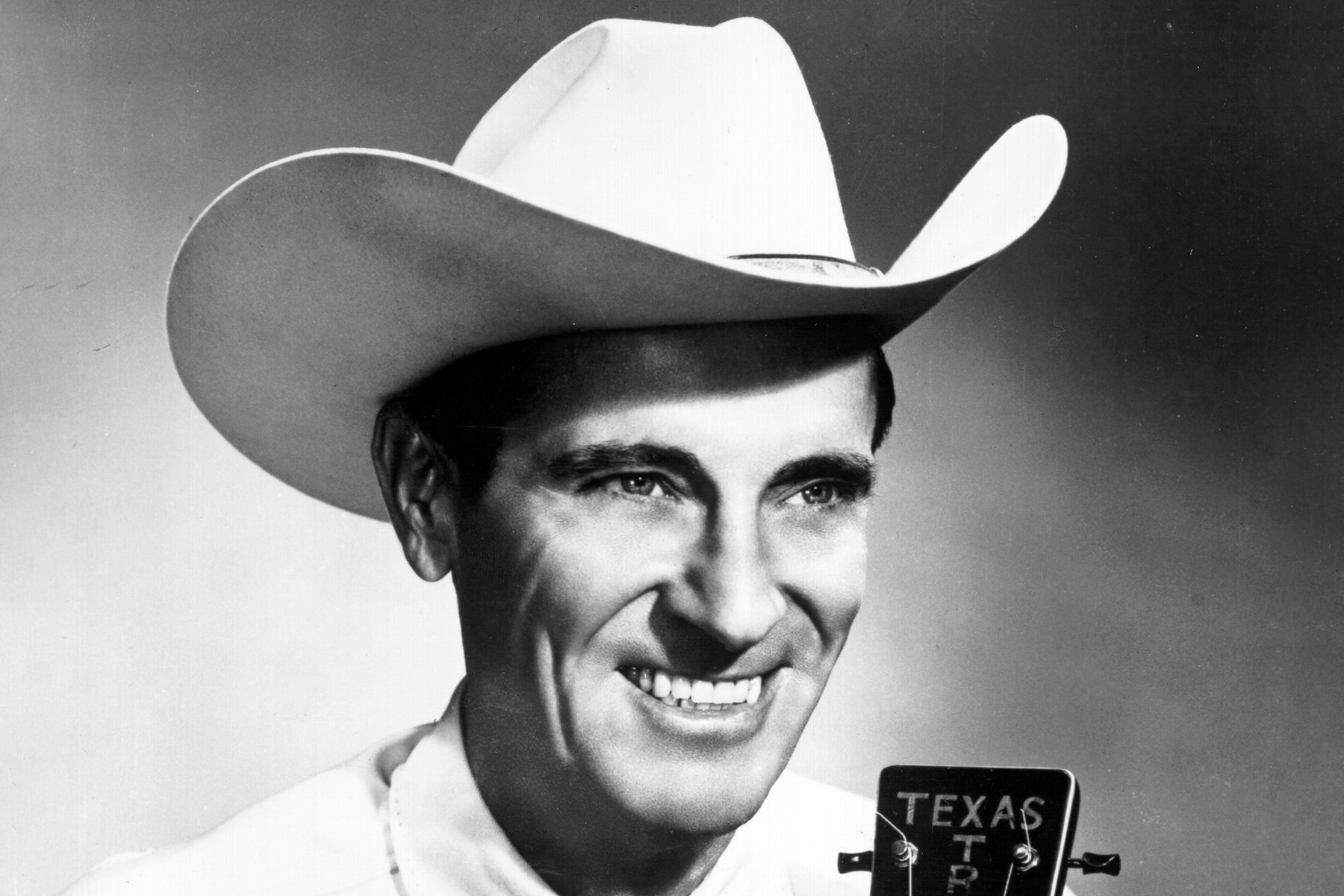 Ernest Tubb portrait circa 1970
Ernest Tubb portrait circa 1970
Image Credit: Michael Ochs Archives/Getty Images
Ernest Tubb began as a Jimmie Rodgers imitator but lost his yodeling ability after a tonsillectomy in 1939. He developed a distinctive, less polished vocal style, which he humorously acknowledged. “Walking the Floor Over You” marked a turning point, emphasizing rhythm and instrumentation as much as vocals. The song highlighted country music’s early embrace of the electric guitar, then considered a somewhat rebellious instrument. Tubb’s unrefined voice paradoxically enhanced his authenticity, appealing to a broad audience and selling millions. This track represents a pivotal moment in top country songs, embracing new sounds and styles.
Buck Owens, ‘I’ve Got a Tiger By the Tail’
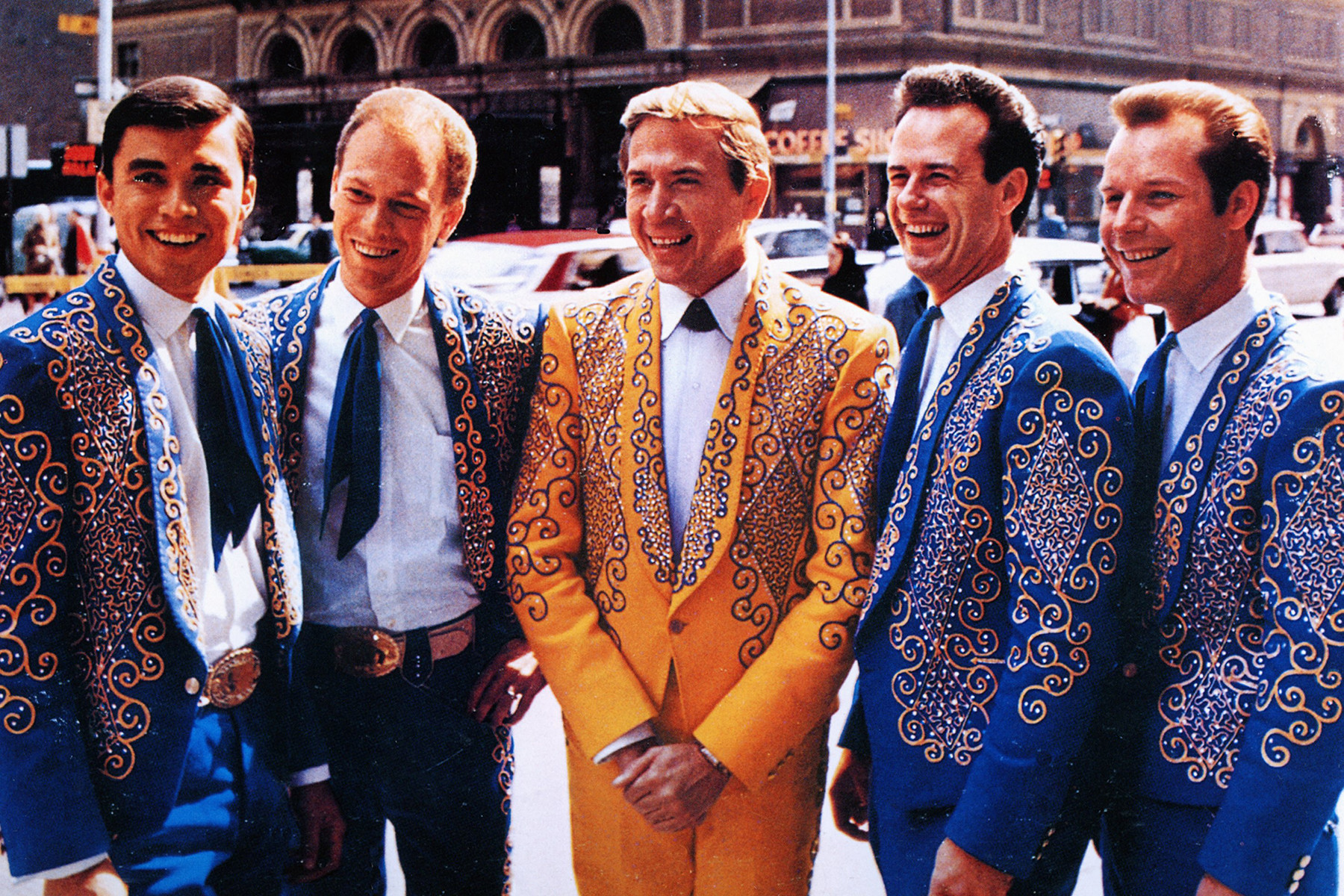 Buck Owens & the Buckaroos
Buck Owens & the Buckaroos
Image Credit: GAB Archive/Redferns/Getty Images
“I’ve Got a Tiger By the Tail” by Buck Owens is a humorous song about a vivacious woman, driven by a vibrant guitar style that influenced bands like the Beatles and the Byrds. It exemplifies the Bakersfield sound, which added a tougher edge to Sixties country. The song originated during a car ride with songwriter Harlan Howard. Inspired by an Esso gas slogan, Owens suggested “Tiger by the Tail” as a title. Howard quickly wrote lyrics, and Owens improvised a melody, completing the song on the spot. Despite Howard’s initial skepticism, “Tiger” became Owens’s biggest hit, topping the country chart and becoming his first crossover pop single. Its upbeat energy and catchy melody make it a standout among top country songs.
The Carter Family, ‘Can the Circle Be Unbroken’
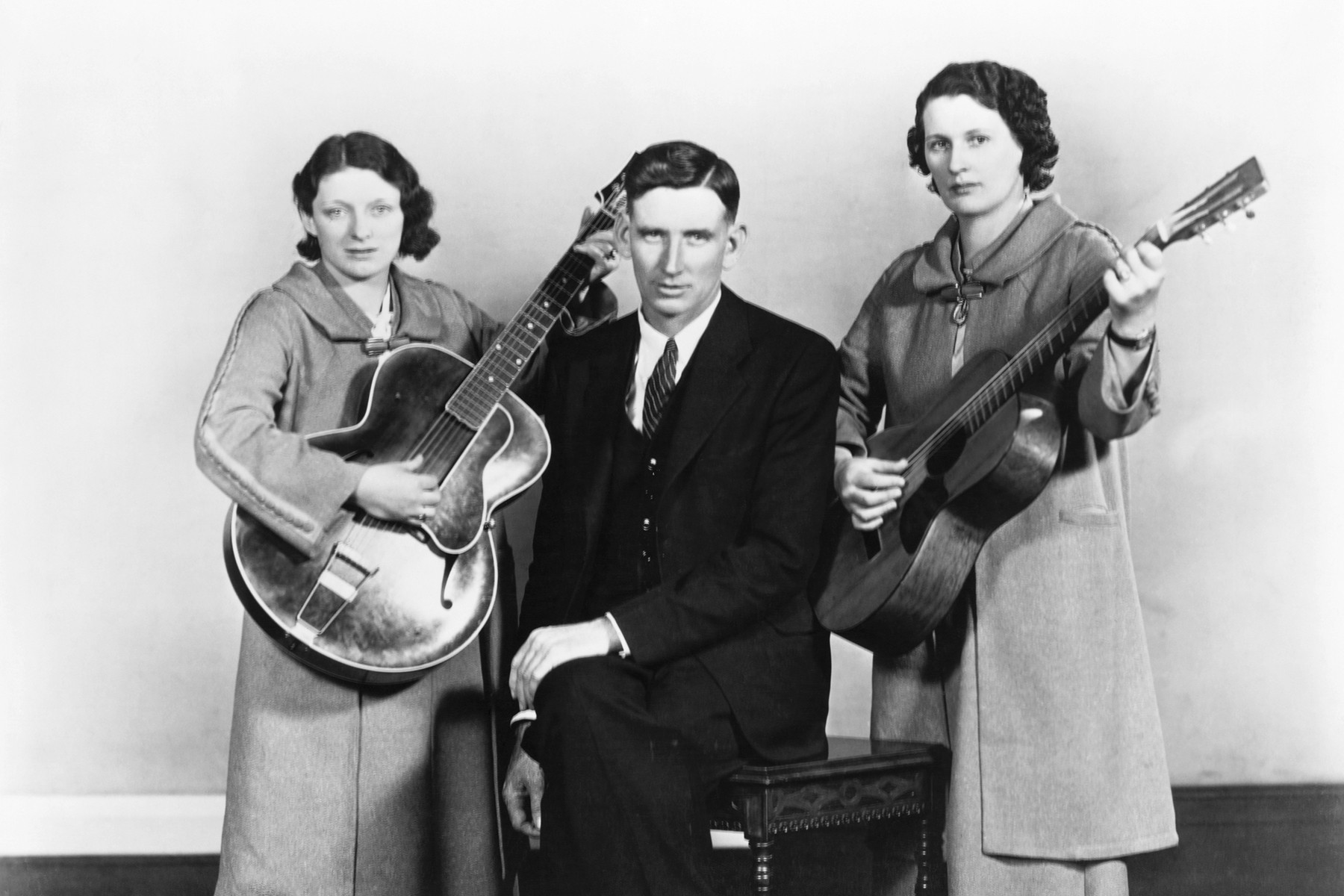 The Carter Family portrait circa 1937
The Carter Family portrait circa 1937
Image Credit: Michael Ochs Archives/Getty Images
A.P. Carter of the Carter Family adapted a somber Christian hymn, “Will the Circle Be Unbroken,” dating back to 1907. He slightly altered the title and significantly rewrote the lyrics, creating “Can the Circle Be Unbroken,” a powerful expression of collective grief in the face of death. This song became a genre-spanning standard, performed at funerals and in gospel, folk, country, and country rock settings. A notable version is by the Nitty Gritty Dirt Band on their 1972 album Will the Circle Be Unbroken, featuring vocals by “Mother” Maybelle Carter. Its themes of loss and continuity resonate deeply, securing its place among top country songs and beyond.
Loretta Lynn, ‘Coal Miner’s Daughter’
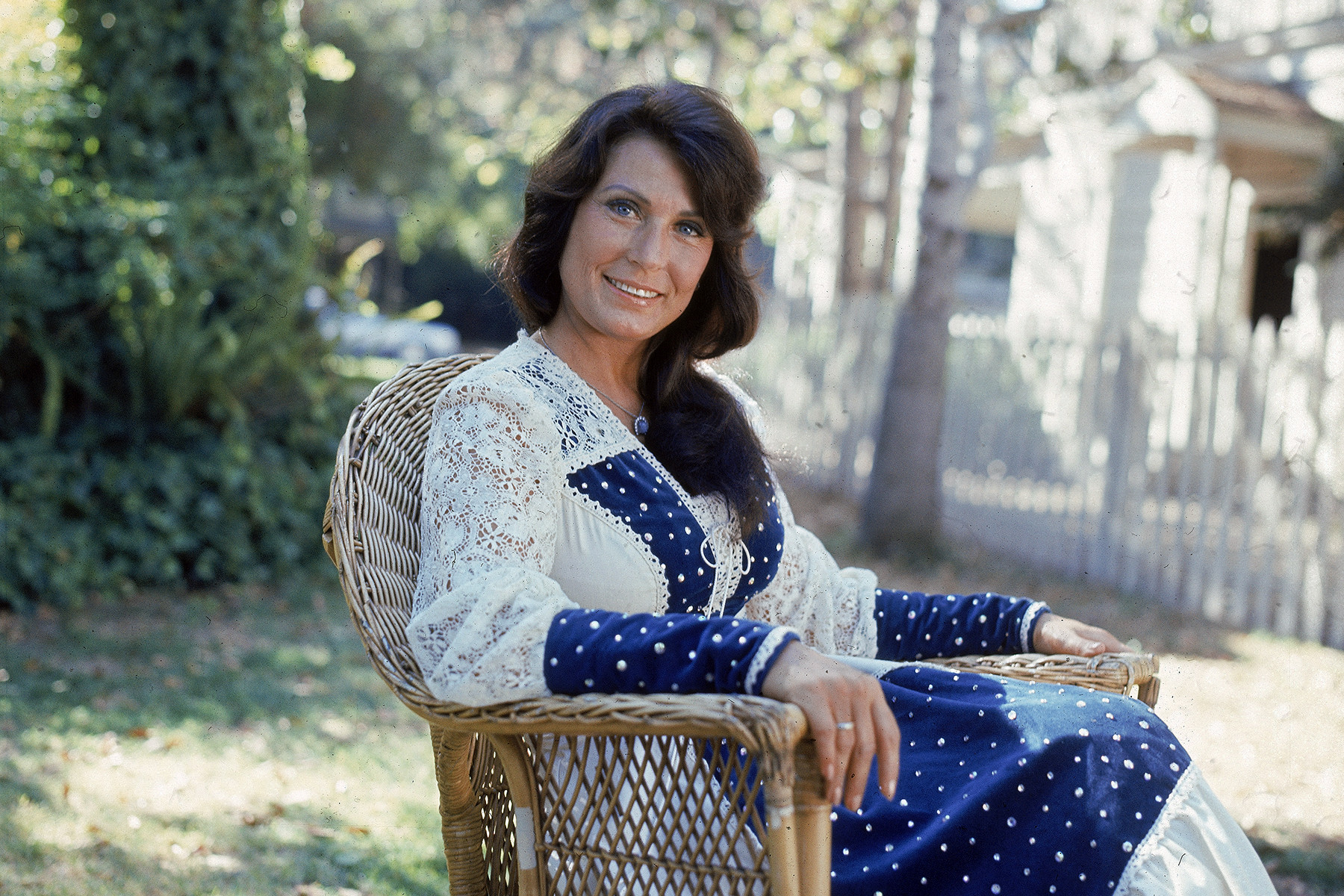 Loretta Lynn portrait 1970s
Loretta Lynn portrait 1970s
Image Credit: Hulton Archive/Getty Images
“Coal Miner’s Daughter” marked a shift for Loretta Lynn from songs about confronting marital rivals to autobiographical storytelling. The original version was lengthy, but producer Owen Bradley streamlined it, removing details to focus the narrative. It became country music’s quintessential rags-to-riches anthem, culminating in a powerful key change. While celebrating her family’s hardworking values, Lynn’s lyrics don’t romanticize poverty, acknowledging her ambition to leave Butcher Holler behind. This honest portrayal of her life story makes it a deeply personal and impactful entry among top country songs.
Bob Wills & His Texas Playboys, ‘New San Antonio Rose’
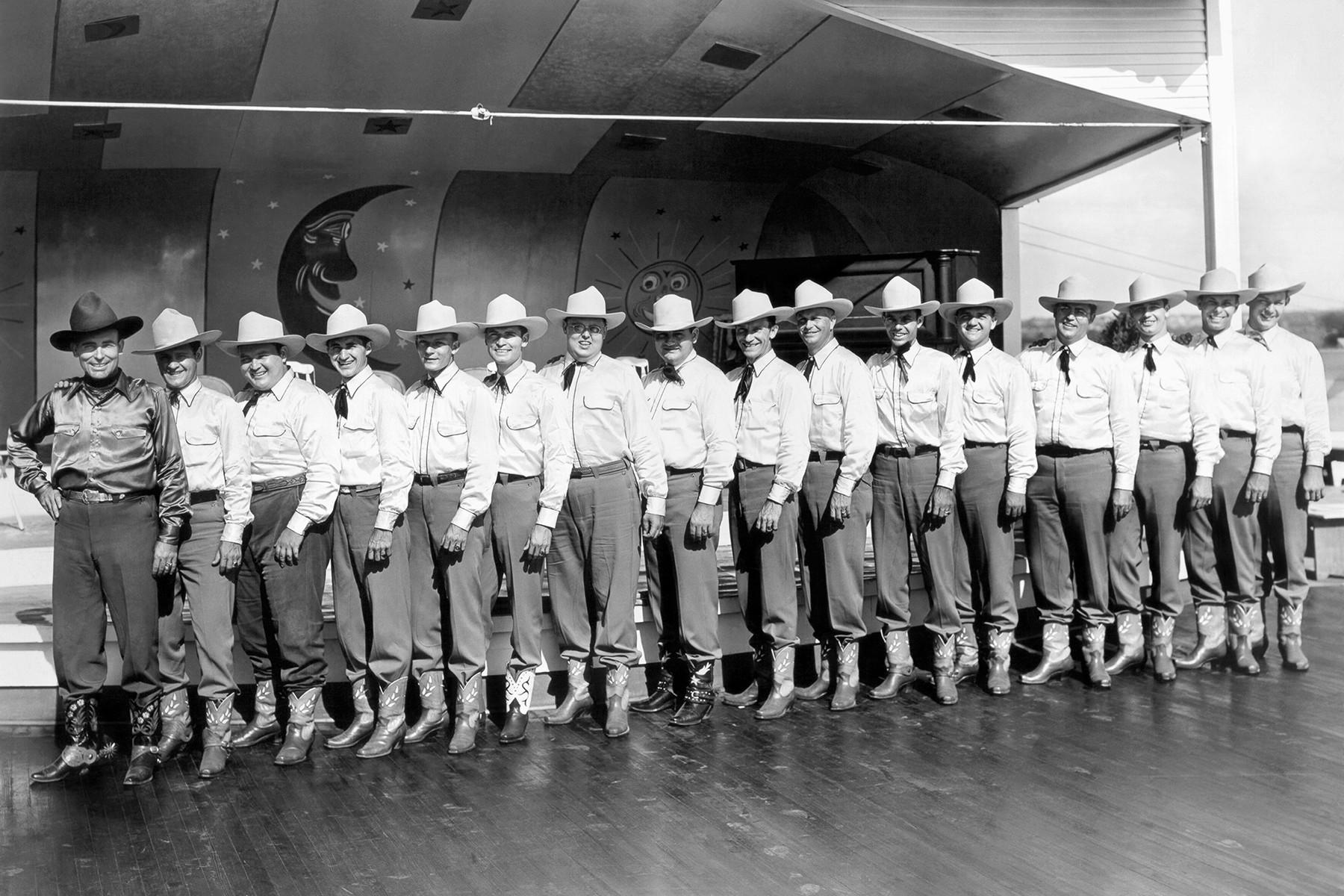 Bob Wills and His Texas Playboys portrait circa 1940
Bob Wills and His Texas Playboys portrait circa 1940
Image Credit: Donaldson Collection/Getty Images
Bob Wills, a pioneer of Western swing, initially wrote “Spanish Two-Step,” then created the original “San Antonio Rose” in 1938 by reversing its bridge. He added new lyrics two years later, resulting in his first national hit, “New San Antonio Rose.” Wills faced criticism from country traditionalists for his innovative style, especially when he performed his signature tune at the Grand Ole Opry with drums and horns. Despite criticism, his experimentation broadened the scope of country music, and “New San Antonio Rose” remains a landmark example of top country songs that pushed genre boundaries.
Glen Campbell, ‘Wichita Lineman’
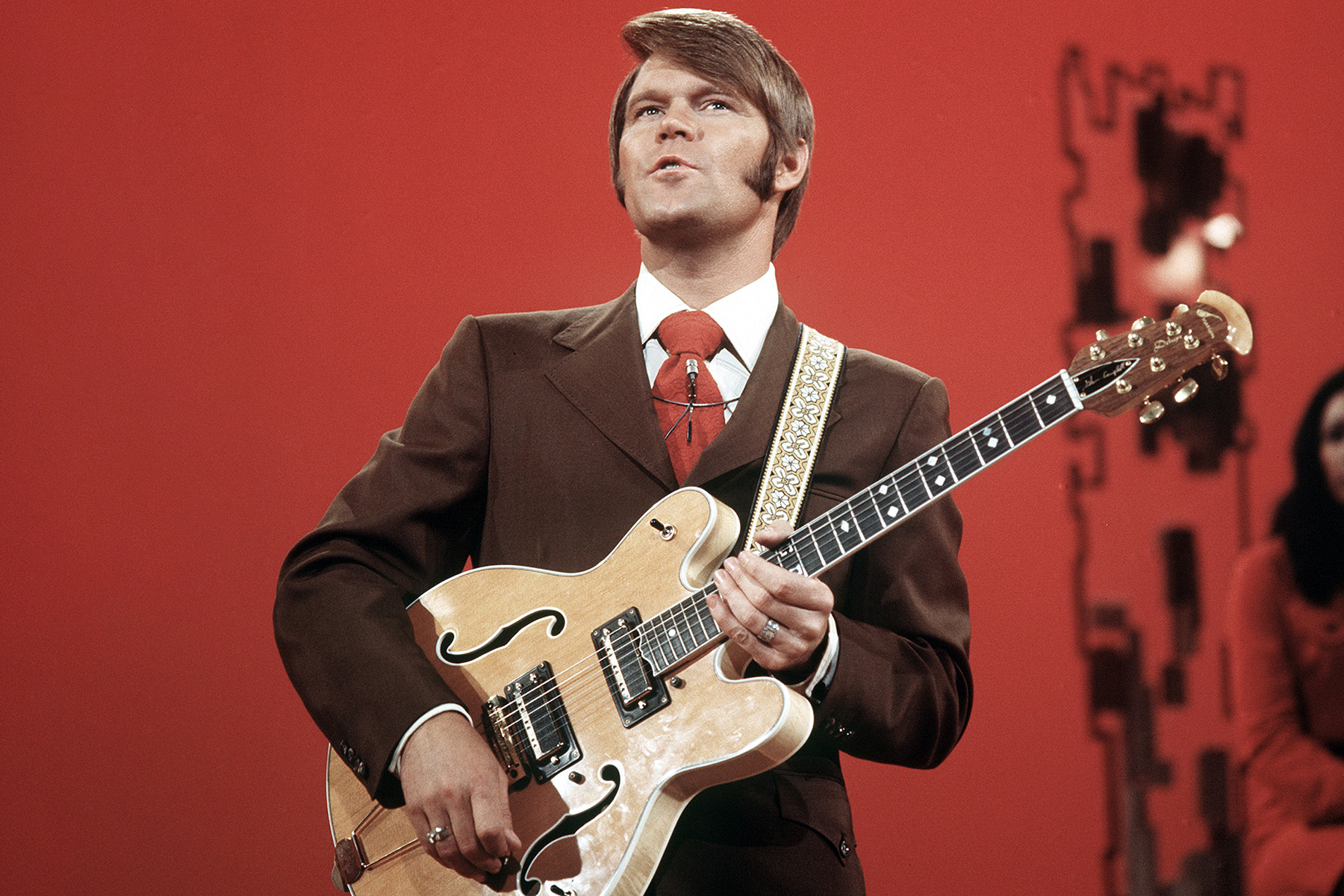 Glen Campbell hosting The Glen Campbell Goodtime Hour
Glen Campbell hosting The Glen Campbell Goodtime Hour
Image Credit: CBS/Getty Images
The romanticized story of “Wichita Lineman” claims Jimmy Webb wrote it after spotting a lonely lineman in rural Oklahoma. However, Webb admitted it was written somewhat under pressure after his previous hit for Glen Campbell, “By the Time I Get to Phoenix.” The song’s lush sound, featuring violins and expansive chords, leaned more towards soft rock than traditional country. Yet, its theme of loneliness resonated deeply, presenting a new take on country individualism. “Wichita Lineman” bridges country and pop, showcasing Webb’s songwriting and Campbell’s vocal delivery, making it a unique and enduring top country song.
Kitty Wells, ‘It Wasn’t God Who Made Honky Tonk Angels’
 Kitty Wells portrait circa 1950
Kitty Wells portrait circa 1950
Image Credit: GAB Archive/Redferns/Getty Images
“It Wasn’t God Who Made Honky Tonk Angels” is a significant “answer song” in American music history, a powerful response to Hank Thompson’s 1952 hit “The Wild Side of Life.” Thompson’s song criticized a woman for choosing a honky-tonk life. Kitty Wells’s reply, penned by Jay Miller, with her husband Johnnie Wright playing bass, shifted the blame to unfaithful men, arguing they create the conditions that lead women to honky-tonks. Wells’s song became the first Number One country hit by a solo female artist, inspiring generations of women. Despite facing radio bans and restrictions from the Grand Ole Opry, its impact was undeniable, establishing it as a groundbreaking and top country song of female empowerment.
George Strait, ‘Amarillo by Morning’
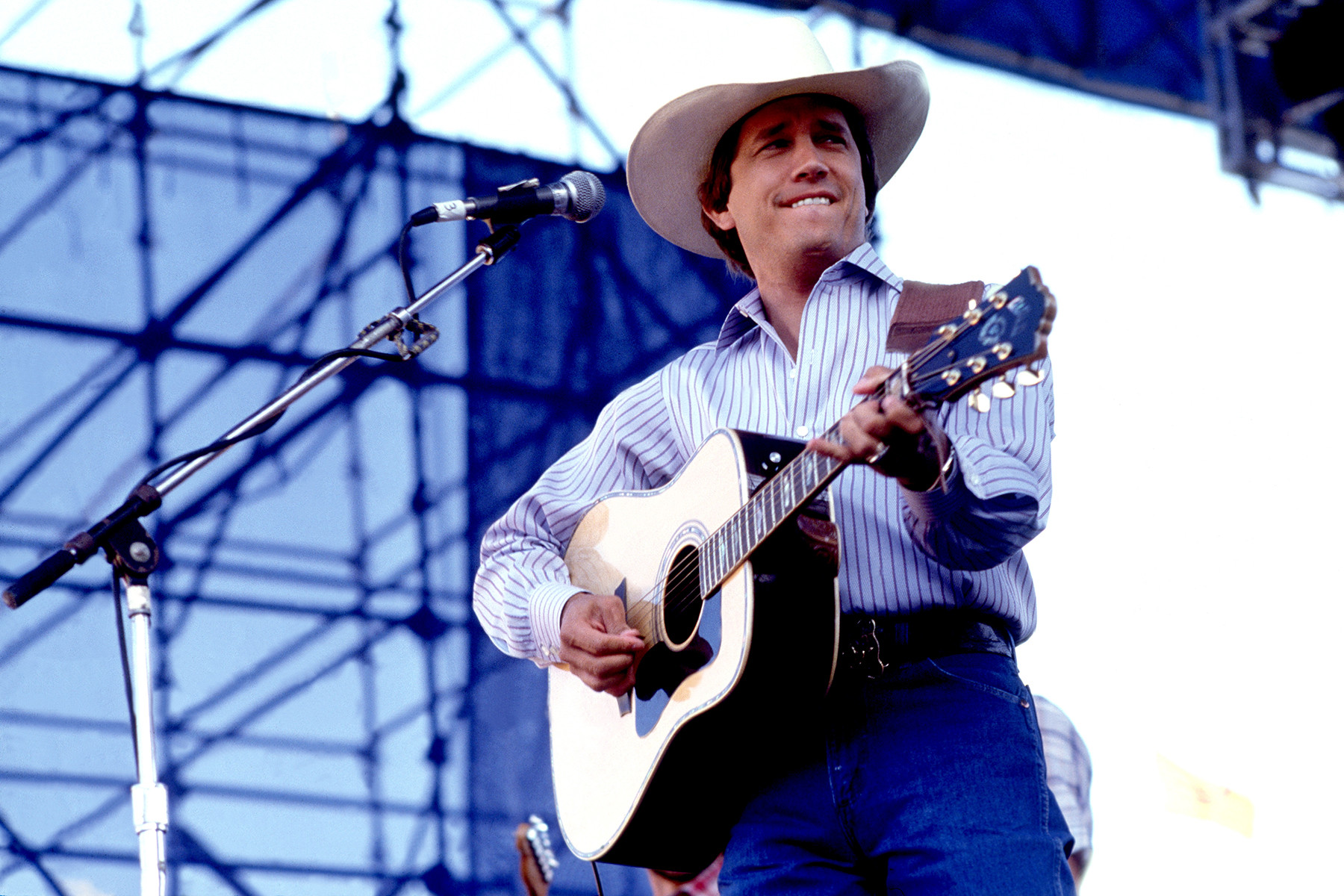 George Strait portrait
George Strait portrait
Image Credit: Paul Natkin/WireImage
“Amarillo by Morning” is considered George Strait’s finest recording, unusually, it never reached Number One. Written by Terry Stafford and Paul Fraser, it stands apart from typical radio country fare. The lyrics convey a poignant mix of desolation and determination, centered on an aging rodeo cowboy who has sacrificed everything for his passion. Blake Mevis’s production, featuring a haunting fiddle lick, enhances the song’s melancholic yet brisk tempo. Strait’s vocals are filled with pathos, perfectly capturing the weariness and resilience of a rodeo drifter. Its depth and emotional resonance make it a standout, even among George Strait’s extensive catalog of top country songs.
Merle Haggard, ‘Mama Tried’
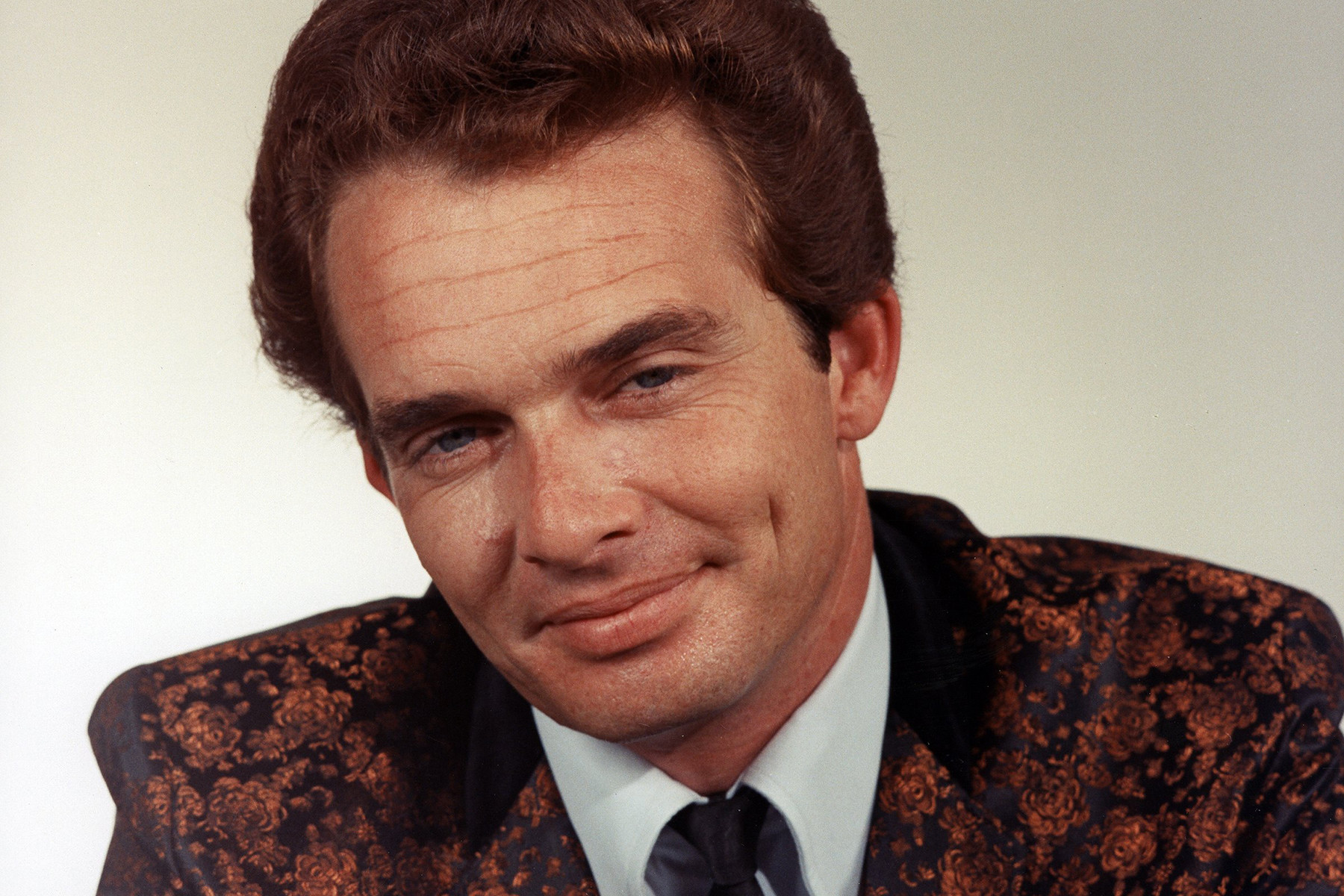 Merle Haggard portrait late 1960s
Merle Haggard portrait late 1960s
Image Credit: Michael Ochs Archives/Getty Images
Merle Haggard, an ex-convict, had a unique authority when writing about prison life. “Mama Tried,” despite being initially commissioned for a B movie, Killers Three, became Haggard’s most autobiographical and iconic song. With its James Burton dobro intro and Roy Nichols guitar solo, “Mama Tried” is a celebration of defiance disguised as an apology. Haggard did serve time in San Quentin, though his sentence was not “life in prison,” a detail he humorously adjusted for rhyme. Less somber than his earlier “Sing Me Back Home,” “Mama Tried” was embraced by the Grateful Dead, who performed it extensively. Its blend of personal narrative and musicality makes it a definitive top country song.
Tammy Wynette, ‘Stand By Your Man’
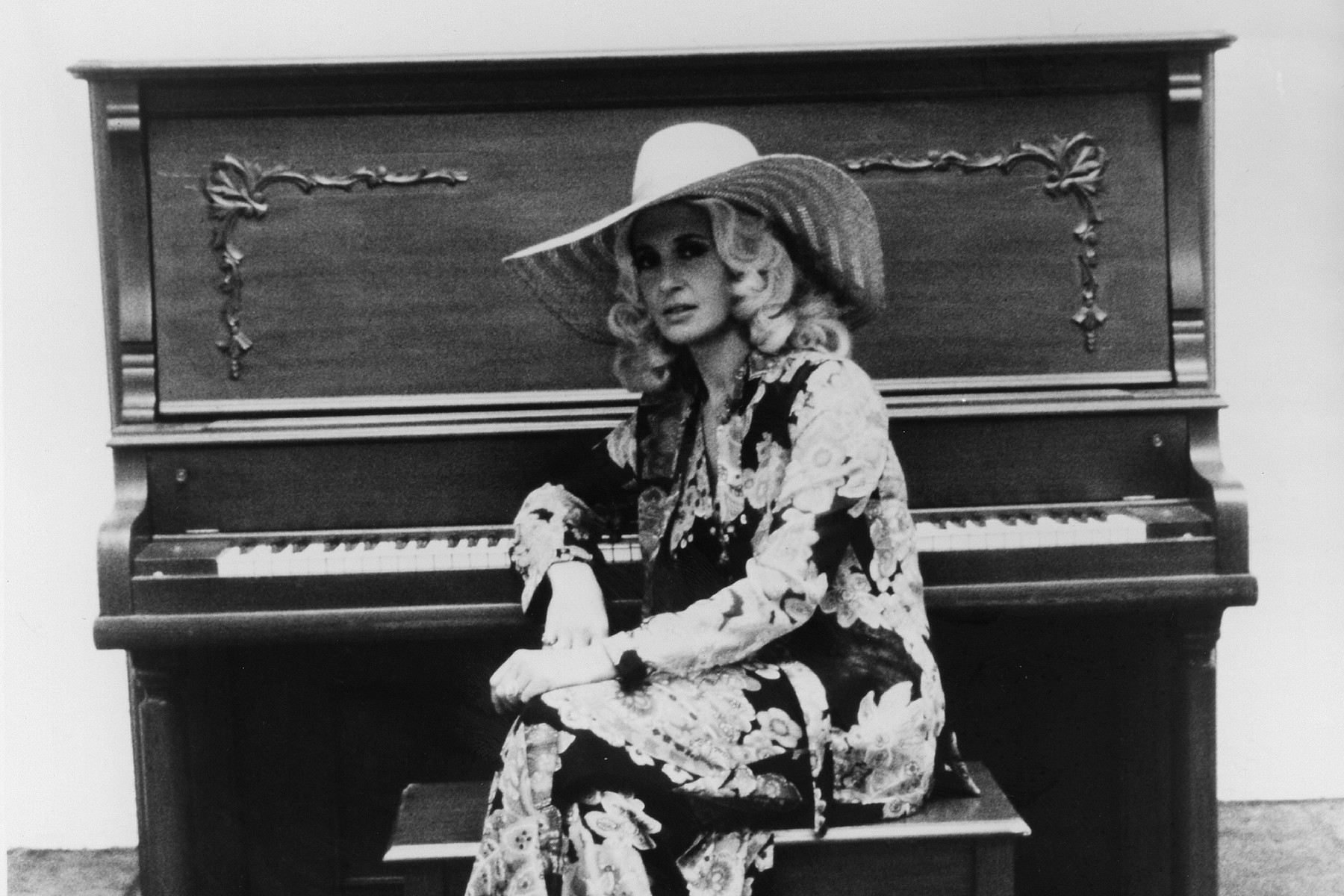 Tammy Wynette portrait circa 1970
Tammy Wynette portrait circa 1970
Image Credit: Michael Ochs Archives/Getty Images
“Stand By Your Man” by Tammy Wynette, while advocating for traditional family values, is also laced with personal contradictions, given Wynette’s own multiple divorces. However, the power of her voice and Billy Sherrill’s lush production are undeniable. Many interpreted the song, co-written with Sherrill, as a conservative response to the burgeoning women’s liberation movement, embedding it in cultural debates. Hillary Clinton even referenced it dismissively in 1992. Wynette defended the song for years, despite having written it in just 20 minutes. Its cultural impact and Wynette’s vocal performance ensure its place as a controversial yet iconic top country song.
Jimmie Rodgers, ‘Standing on the Corner (Blue Yodel #9)’
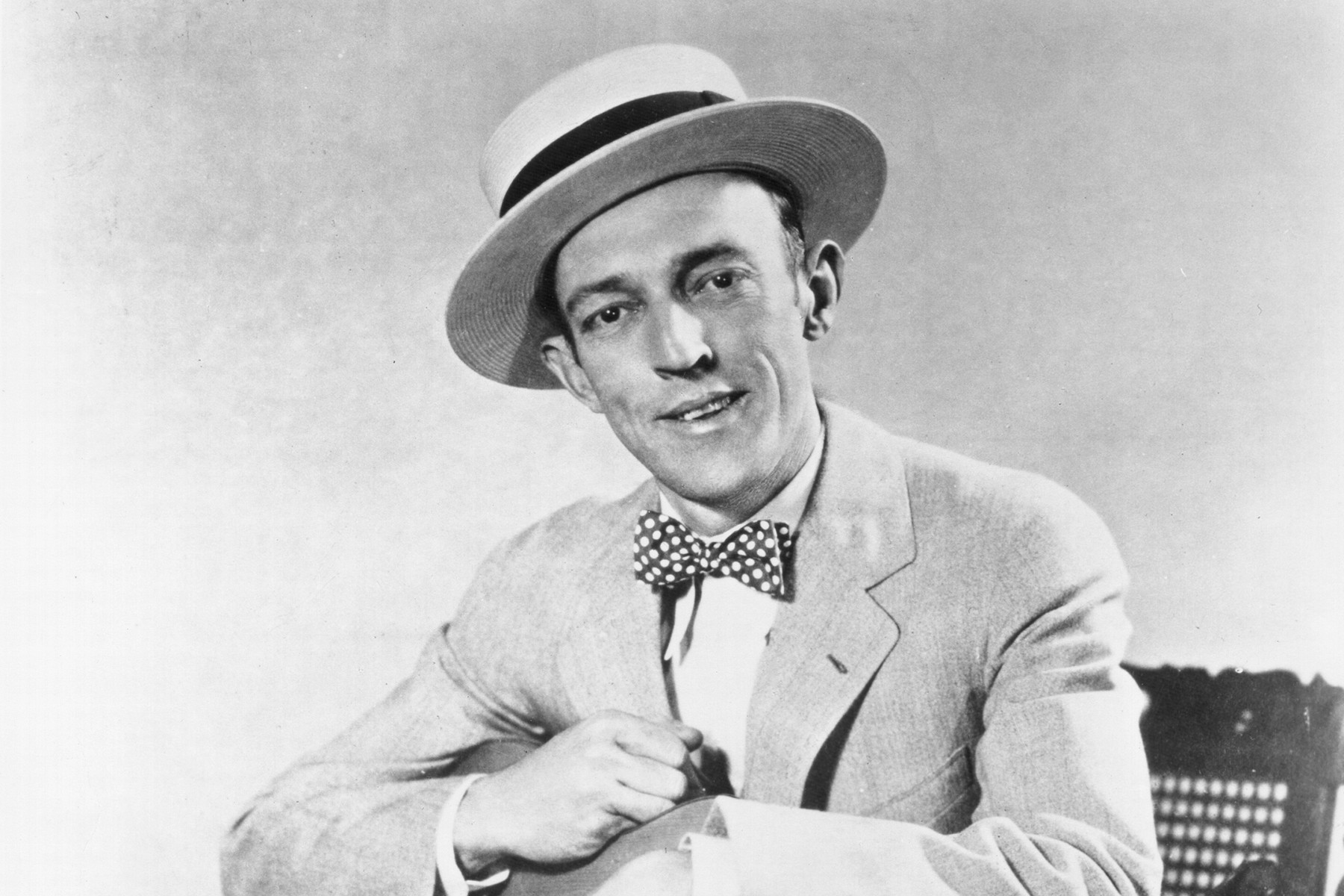 Jimmie Rodgers portrait circa 1930 with acoustic guitar
Jimmie Rodgers portrait circa 1930 with acoustic guitar
Image Credit: Michael Ochs Archives/Getty Images
By 1930, Jimmie Rodgers, despite battling tuberculosis, was a major star. Known for his “blue yodels,” Rodgers was an innovative entertainer, leading to his unexpected country-jazz collaboration, “Standing on the Corner (Blue Yodel #9),” with jazz legend Louis Armstrong and his wife Lil Hardin. Armstrong’s trumpet improvisationally follows Rodgers’s bluesy narrative. The lyrics depict Rodgers as a somewhat roguish character. This unexpected fusion of country and jazz highlights Rodgers’s versatility and adventurous spirit, making this track a unique and historically significant top country song.
Ray Charles, ‘You Don’t Know Me’
 Ray Charles performing in Paris, 1962
Ray Charles performing in Paris, 1962
Image Credit: Reporters Associes/Gamma-Rapho/Getty Images
Ray Charles selected “You Don’t Know Me,” penned by Cindy Walker and Eddy Arnold, from around 250 country songs for his groundbreaking 1962 album, Modern Sounds in Country and Western Music. Backed by a chorus and strings, Charles infused jazz and R&B into “hillbilly” material, creating a deeply emotional performance. He noted the earthy, blues-like quality of country lyrics. “You Don’t Know Me” became a Number Two pop hit for Charles and was later covered by Elvis Presley, Bob Dylan, and Willie Nelson. Richard Manuel of the Band delivered a particularly poignant version. Modern Sounds promoted racial integration in the music industry, elevated Nashville songwriters, and showcased Charles’s artistic control. This song and album are pivotal in the history of top country songs, bridging racial and genre divides.
George Jones, ‘He Stopped Loving Her Today’
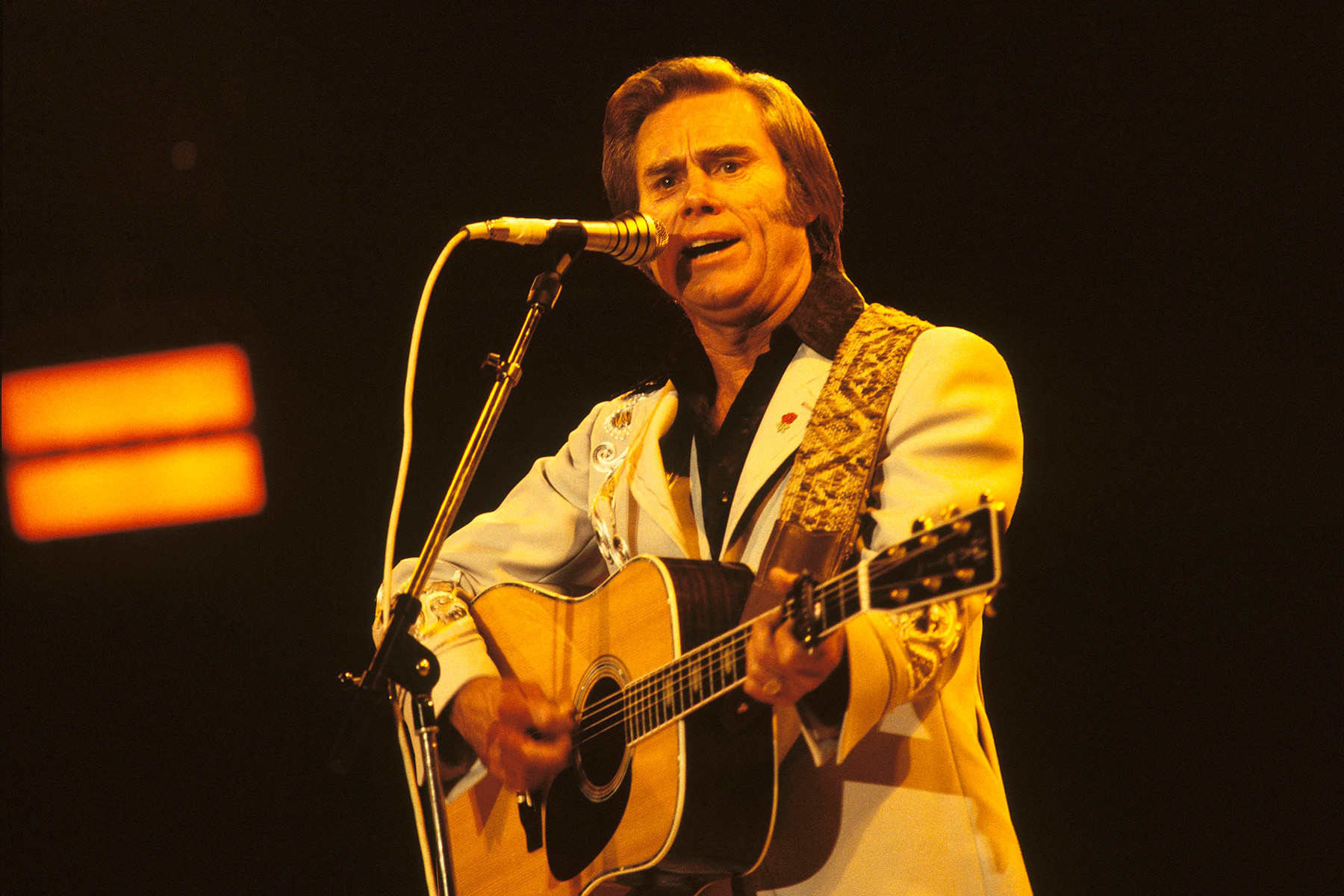 George Jones performing at Wembley Arena in 1981
George Jones performing at Wembley Arena in 1981
Image Credit: David Redfern/Redferns/Getty Images
George Jones famously disliked “He Stopped Loving Her Today,” telling producer Billy Sherrill, “Nobody will buy that morbid son of a bitch.” However, it became his first Number One hit in six years. By 1980, Jones was struggling personally, battling addiction and fragmented identity. It took 18 months to record the song due to his slurred speech. The song’s narrative of undying love culminating in death, enhanced by Sherrill’s dramatic strings, is intensely emotional. Despite Jones’s reservations, its hyperbole resonated deeply with country audiences, making it a defining and top country song of heartbreak.
Hank Williams, ‘I’m So Lonesome I Could Cry’
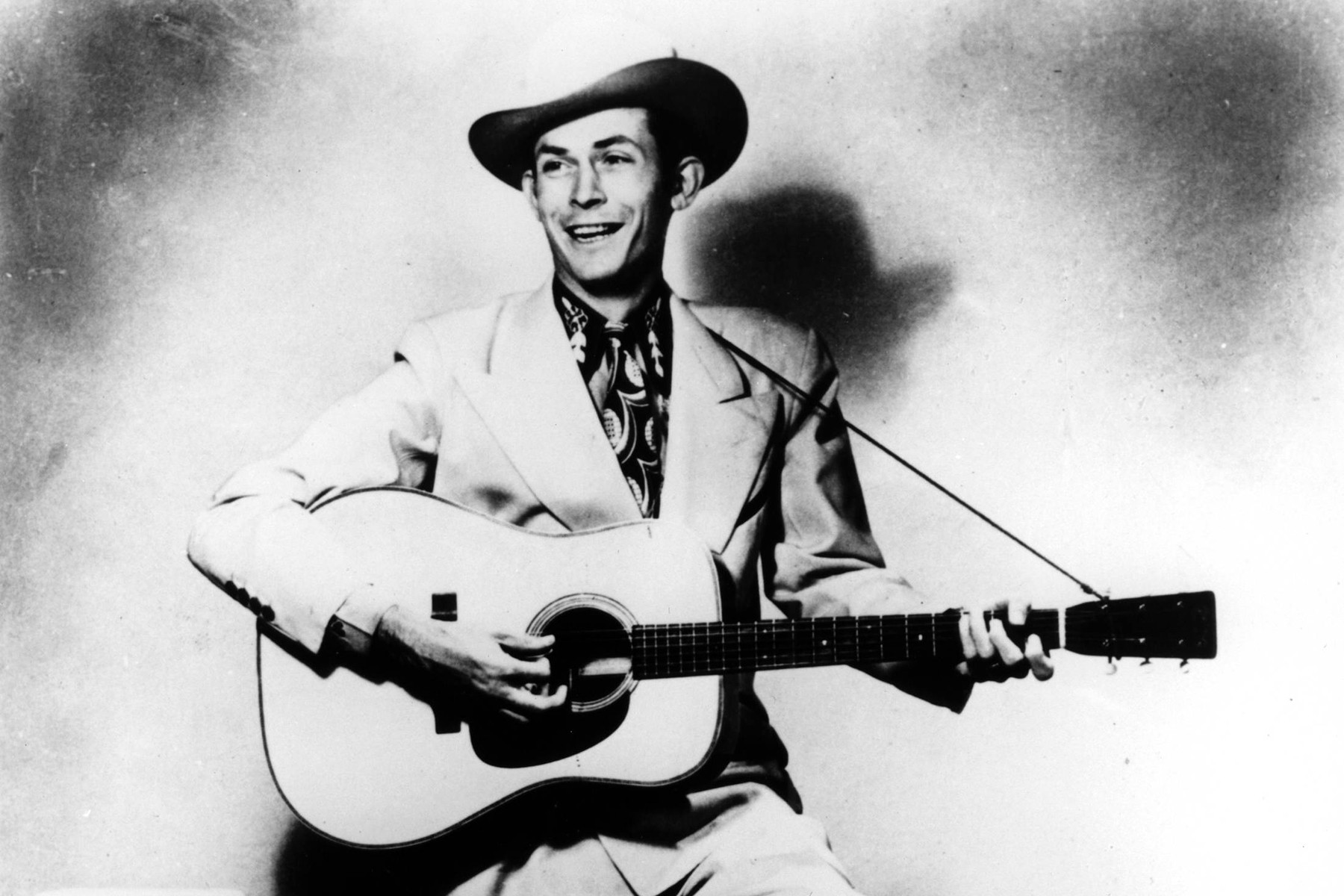 Hank Williams portrait with guitar
Hank Williams portrait with guitar
Image Credit: RB/Redferns/Getty Images
“I’m So Lonesome I Could Cry” by Hank Williams is a masterfully controlled expression of profound sadness. Whether encountered through Bob Dylan’s version in Don’t Look Back, Sandra Bernhard’s performance, Johnny Cash’s duet with Nick Cave, or even Terry Bradshaw’s rendition, its emotional power remains undiminished. Williams wrote it during his failing marriage to Audrey, using vivid, melancholic imagery – a too-blue whippoorwill, a hidden moon, a fading star – to convey his despair. The song culminates in the line, “I’ve lost the will to live.” Tragically, Williams died less than four years later. Its poetic depth and raw emotion solidify its place as one of the most impactful top country songs about loneliness and despair.
Patsy Cline, ‘Crazy’
 Patsy Cline portrait circa 1970
Patsy Cline portrait circa 1970
Image Credit: Michael Ochs Archives/Getty Images
“Crazy” was written by Willie Nelson for Billy Walker, but Patsy Cline heard it through her husband, Charlie Dick, a friend of Nelson’s. Initially, Cline found Nelson’s demo too slow and unflattering, but she recorded her iconic version in a single take. Floyd Cramer’s piano and Elvis Presley’s Jordanaires’ backing vocals added to the song’s haunting quality. “Crazy” became Cline’s signature song, a staple of the Great American Songbook, and even Ross Perot’s 1992 presidential campaign anthem. Its enduring appeal and Cline’s definitive performance ensure its status as one of the top country songs of all time.
Johnny Cash, ‘I Walk the Line’
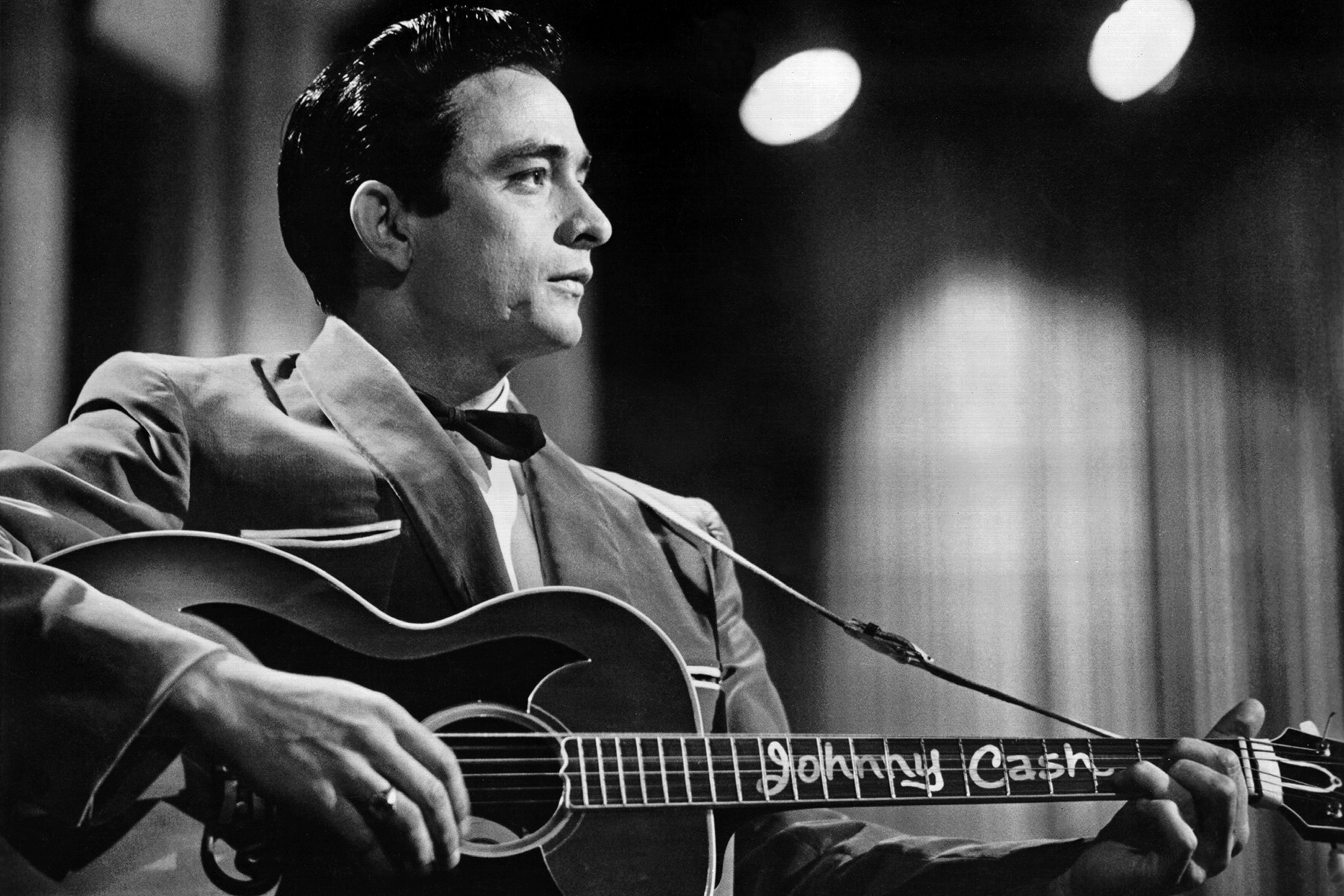 Johnny Cash Sun Records publicity shot 1957
Johnny Cash Sun Records publicity shot 1957
Image Credit: Michael Ochs Archives/Getty Images
“I Walk the Line” is a defining song for Johnny Cash, encapsulating his iconic persona. Its greatness lies in Cash’s resonant baritone, the Tennessee Two’s minimalist rhythm, romantic lyrics, and the humming that signals key changes. Written on tour, possibly in East Texas, and released in 1956, it was intended as a love letter to his first wife, Vivian Liberto Cash. However, given Cash’s later relationship with June Carter Cash, the song’s meaning has broadened. Cash himself acknowledged a spiritual dimension, telling Robert Hilburn that “’I Walk the Line’ was my first gospel hit.” Its blend of romance, rhythm, and Cash’s iconic voice makes it the quintessential top country song, defining a genre and an artist.
Dolly Parton, ‘Jolene’
 Dolly Parton portrait circa 1975
Dolly Parton portrait circa 1975
Image Credit: Silver Screen Collection/Getty Images
“Jolene” represents Dolly Parton at her peak as a singer, songwriter, and storyteller, creating the ultimate country heartbreak song. Five decades later, it remains iconic. Parton described it as deeply personal, reflecting her own stories and feelings. While embracing her “Backwoods Barbie” image, she fought for recognition in Nashville, writing powerful songs like “Coat of Many Colors” and “Down From Dover.” In “Jolene,” she pleads with another woman not to steal her man, reaching high, emotive notes. A Number One country hit in 1973, it feels both timeless and contemporary, inspiring covers by artists from Miley Cyrus to The White Stripes to Beyoncé. “Jolene” is the definitive Dolly Parton song and a pinnacle of top country songs, showcasing raw emotion and storytelling.


